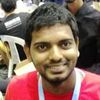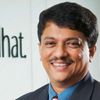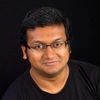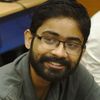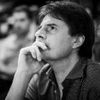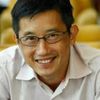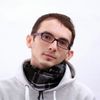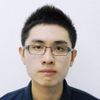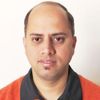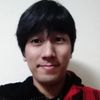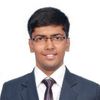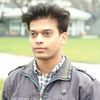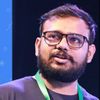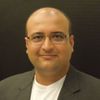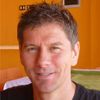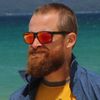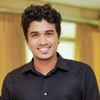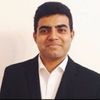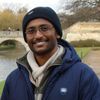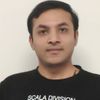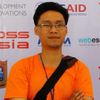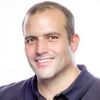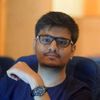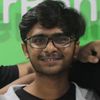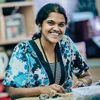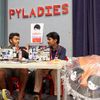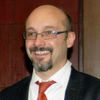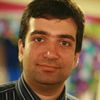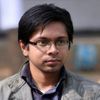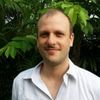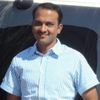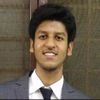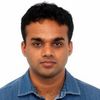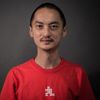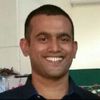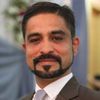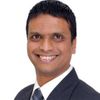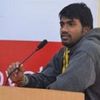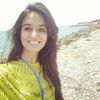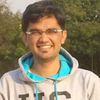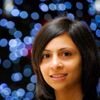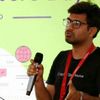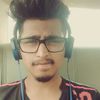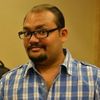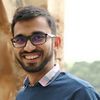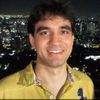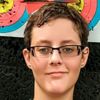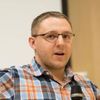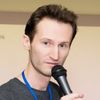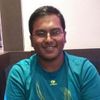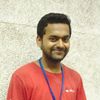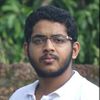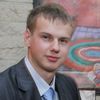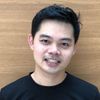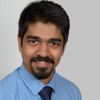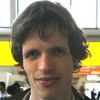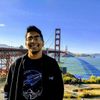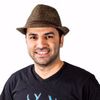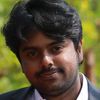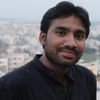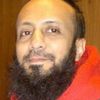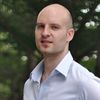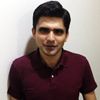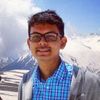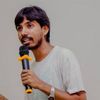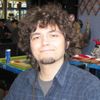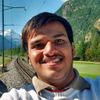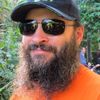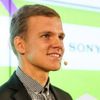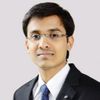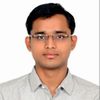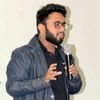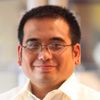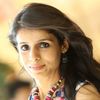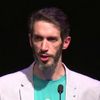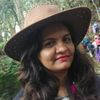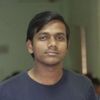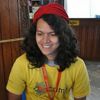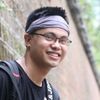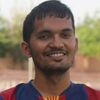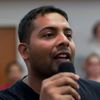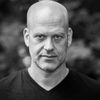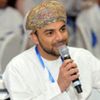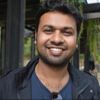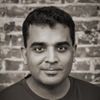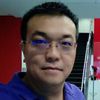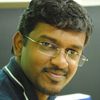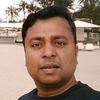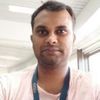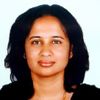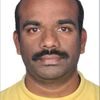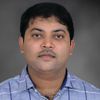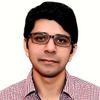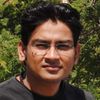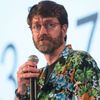Tracks
Thursday, 22nd Mar
- M Padmal (Developer FOSSASIA PSLab)
- Workshop
The workshop will cover how to setup and create scientific experiments with the FOSSASIA PSLab or use it to measure electronic conditions in hardware prototypes. The Open Source Pocket Science Lab can be used through the desktop and phones. It combines different devices including an Oscilloscope, a voltmeter and several sensors. It is useful for startups, hobbyists and the educational sector. You can measure currents and all kinds of electronic devices and connections with the PSLab. Check your prototypes or do all kinds of electronic experiments.
Developer FOSSASIA PSLab
Exhibition - Pocket Science Lab
Thursday, 22nd Mar, 16:00 - 17:55
- Science Tech
- Harish Pillay (Head, Community Architecture and Leadership Red Hat), Damini Satya ( Software Engineer - Salesforce)
- Special Session
Welcome at the FOSSASIA Summit!
Head, Community Architecture and Leadership Red Hat
Software Engineer - Salesforce
Damini Satya has been an active open source contributor turning committer and mentor affiliated to the FOSSASIA project and leads a large chunk of development work happening on many of the critical projects. Damini's contribution to the open source community has been multifold ranging from engagement in development, community building and outreach, organizing and administration as well as mentorship. Currently, she works as a Software Engineer at Salesforce.
Lecture Theatre
Thursday, 22nd Mar, 13:00 - 13:05
- Open Data, Internet Society, Community
The FOSSASIA developer network is one of the largest communities in the Open Source world today and we are proud to have a positive impact and improving people's lives with Open Technologies. It took us years to develop approaches and processes to scale projects and we are constantly reviewing and working hard on improving ourselves. So, what is next?
What do we want to do next, what do we want to do better and how do we want to help more people, train developers, create better software and hardware and do good?
We came up with three areas, that we want to focus on:
1. In 2018, it is our goal to improve the quality of work of the FOSSASIA organization and contributions in our projects. We believe that the way to move forward is to provide project owners with more responsibilities and ownership. We aim to develop more and more into an organization that provides a framework for projects. Therefore we will continue to develop programs like Codeheat, OpenTechNights, organize meetups, participate in GSoC and GCI. We also plan to cooperate more with other organizations. Why shouldn't we run the OpenTechNights at events around the world and help to bring people together? Why shouldn't we have more OpenTechSummits with partners in China, India and Vietnam?
2. We have made very good experience with our best practices. We have seen that newcomers can progress very fast if they feel welcome and receive help and guidance from others. After they become participants in our programs many contributors move on to support others as mentors. We also see that contributors have moved to large companies, but still continue to help others in the community. This is wonderful. We want to share our experience and inspire other projects. Therefore, we plan to participate in more events, we will set up a monthly live-cast and we will run a YouTube series on these topics. While a lot of traditional school education still encourages a top-down approach we will focus our attention even more on enabling the community to collaborate on an equal level and follow the idea of sharing ideas and code freely.
3. A question that any organization and project encounters over time is how to ensure the work and setup is sustainable? What settings do projects need to succeed? While there are many non-profit organizations out there developing Open Technologies and FOSS, we also see that many people are moving on to companies that often focus on proprietary solutions and prevent contributors from continuing their engagement in the Open Tech community due to financial reasons and to support their families. At the same time, we see many projects that would have a great potential to be Open Source and at the same time commercially successful. Therefore we are starting a new dedicated FOSSASIA Accelerator that is specifically for Open Source projects. We invite projects to apply for the accelerator and investors and companies to team up with us. And, think about it, while many startups these days start with an idea, Open Source startups already have a product before any investment has started. So, these are great opportunities!
The problems in this world are too big. There is a lot of injustice, we are destroying the environment and people are even fighting each others. At FOSSASIA we want to set an example of collaboration across borders and cultures. So, please join us and let's make this a success. I wish everyone a wonderful event full of sharing and new understandings. Let's get inspired to share and learn for each other to build a better world.
Founder FOSSASIA
Hong Phuc, originally from Vietnam, lives in between the US, Singapore and Berlin. She is the founder of FOSSASIA, the Open Source organization from Asia with the goal to bring together a global community to develop Open Tech solutions to form a better future. Hong Phuc steers the organization, directs project teams and runs events like the annual FOSSASIA Summit since 2009.
With her team she is also provides IT consultancy for NGOs and corporations. As a Science Hack ambassador she collaborates with the Open Science community and works on the development of skills for SUSI.AI, the Open Source personal assistant.
Besides all this she still keeps the eco-hotel she founded in the Vietnamese Mekong-Delta running. Hong Phuc loves learning languages and plays piano.
Lecture Theatre
Thursday, 22nd Mar, 15:05 - 15:20
- Open Data, Internet Society, Community
- Hong Phuc Dang (Founder FOSSASIA), Michael Christen (Founder SUSI AI), Mario Behling (Co-Founder FOSSASIA)
- Special Session
Codeheat (In the Heat of the Code) is an annual coding contest for FOSSASIA projects. The contest runs between September and January. Grand prize winners attend the FOSSASIA OpenTechSummit in Singapore and receive the award officially in an award ceremony.
Founder FOSSASIA
Hong Phuc, originally from Vietnam, lives in between the US, Singapore and Berlin. She is the founder of FOSSASIA, the Open Source organization from Asia with the goal to bring together a global community to develop Open Tech solutions to form a better future. Hong Phuc steers the organization, directs project teams and runs events like the annual FOSSASIA Summit since 2009.
With her team she is also provides IT consultancy for NGOs and corporations. As a Science Hack ambassador she collaborates with the Open Science community and works on the development of skills for SUSI.AI, the Open Source personal assistant.
Besides all this she still keeps the eco-hotel she founded in the Vietnamese Mekong-Delta running. Hong Phuc loves learning languages and plays piano.
Founder SUSI AI
Michael is the founder of SUSI AI, loklak and, the creator of the Peer-to-Peer Search engine YaCy. He is a Big Data Engineer consulting for some of the largest corporate players in Germany on search technology and digital transformation strategies. He is also architect of large search portals like the German Digital Library.
Co-Founder FOSSASIA
Lecture Theatre
Thursday, 22nd Mar, 15:20 - 15:30
- Open Data, Internet Society, Community
- Colin Charles (Chief Evangelist Percona), Saptak Sengupta (Software Developer Zomato), Carsten Haitzler (Master Engineer Samsung Electronics), Philip Paeps (Director The FreeBSD Foundation), Victoria Bondarchuk (UX Researcher Open Source Design), Justin Lee (Consultant FOSSASIA), Harish Pillay (Head, Community Architecture and Leadership Red Hat), Christopher Adams (Blockchain Expert Fabricatorz), Roland Turner (Organizer FOSSASIA)
- Special Session
Which tracks and sessions do we have at the FOSSASIA Summit from Thursday (March 22) till Sunday (March 25)? In 12 tracks attendees can learn about the latest Open Source technologies and discuss topics from development to deployment and DevOps. We are bringing together some of the core track organizers and MCs to give you a super quick wrap up of what will happen over the next few days in tracks under the following header:
Machine Learning and AI
Open Design, IoT, Hardware, Imaging
Blockchain
Science, Tech and Education
Kernel and Platform
Database
Cloud, Container, DevOps
Open Data, Internet Society, Community
Open Event Solutions
Cybersecurity
Web and Mobile
Open Source in Business
Chief Evangelist Percona
Colin Charles is the Chief Evangelist at Percona. He was previously on the founding team of MariaDB Server in 2009, and had worked at MySQL since 2005, and been a MySQL user since 2000. Before joining MySQL, he worked actively on the Fedora and OpenOffice.org projects. He's well known within open source communities in APAC, and has spoken at many conferences.
Software Developer Zomato
Master Engineer Samsung Electronics
Worked in the Linux and open source world industries for 20 years in several countries on all sides of the globe, has contributed to several open source projects and is best known for founding the Enlightenment window manager project and having written lots of graphics related code for X11. That's 20 years of programming mostly in C and assembly on top of Linux, shipping in 100+ million devices around the globe.
Director The FreeBSD Foundation
Philip Paeps (“Trouble”) is an independent consultant and contractor based in Belgium. He provides research and development on low-level software and operating systems, particularly in an embedded or real-time context. His main interests are bootloaders, device drivers and high-performance networking. He can also be convinced to teach courses and workshops on a variety of networking-related topics.
In his so-called free time, Philip is a FreeBSD committer contributing mainly to the kernel and a member of the FreeBSD security team. He was one of the main organisers of FOSDEM, the largest annual open source software conference in Europe, from the early 2000s until 2015. He denies having any involvement with amateur radio or tabletop role playing games.
UX Researcher Open Source Design
Victoria Bondarchuk is a UX researcher, interested in open source and open design. Member of opensourcedesign.net.
Consultant FOSSASIA
Head, Community Architecture and Leadership Red Hat
Blockchain Expert Fabricatorz
Organizer FOSSASIA
Lecture Theatre
Thursday, 22nd Mar, 15:30 - 15:40
- Open Data, Internet Society, Community
- Harish Pillay (Head, Community Architecture and Leadership Red Hat), Roland Turner (Organizer FOSSASIA), Hong Phuc Dang (Founder FOSSASIA), André Rebentisch (Organizer Open Tech Summit Europe), Mario Behling (Co-Founder FOSSASIA)
- Lightning Talk
Join us for an Open Tech get together with coffee and snacks, meet speakers and developers and dive into the exhibition to explore companies and projects with us. This gathering is hosted by the FOSSASIA core team and our friends from Open Tech.
Head, Community Architecture and Leadership Red Hat
Organizer FOSSASIA
Founder FOSSASIA
Hong Phuc, originally from Vietnam, lives in between the US, Singapore and Berlin. She is the founder of FOSSASIA, the Open Source organization from Asia with the goal to bring together a global community to develop Open Tech solutions to form a better future. Hong Phuc steers the organization, directs project teams and runs events like the annual FOSSASIA Summit since 2009.
With her team she is also provides IT consultancy for NGOs and corporations. As a Science Hack ambassador she collaborates with the Open Science community and works on the development of skills for SUSI.AI, the Open Source personal assistant.
Besides all this she still keeps the eco-hotel she founded in the Vietnamese Mekong-Delta running. Hong Phuc loves learning languages and plays piano.
Organizer Open Tech Summit Europe
Co-Founder FOSSASIA
Lecture Theatre
Thursday, 22nd Mar, 15:40 - 16:00
- Open Data, Internet Society, Community
FOSSASIA summit had helped brought awareness of Open Source technologies to the general public and enabled collaboration between professionals in the area of ICT (Information & Communications Technology). Echoing the Singapore Government’s focus in the developing Singapore's E-commerce and digital economy, organisations such as FOSSASIA plays an important role as the melting pot for businesses, software developers and government agencies to innovate ICT solutions. Open Source technology can benefit local businesses and workforce. FOSSASIA summit 2018 will cover emerging technologies such as Natural Language Processing using Artificial Intelligence and Distributed technologies like Blockchain, thereby opening up new digital frontiers for Singapore SMEs (Small and Medium enterprise), workforce development, and Public services. Only because the code is open we are able to talk about it. Open code is a wonderful present to the community.
Daimler uses Free and Open Source software within several of its products and thrives to support and collaborate with the Open Source community. Automakers are becoming software companies, and just like in the tech industry Open Source is the way forward. At the keynote Daimler will outline its engagement in the Open Source community and plans for the future. Daimler is the first German automaker that joined the development of Automotive Grade Linux to help build the next generation connected car platform. The company is also a member of the Linux Foundation and Hyperledger.
Senior Manager Daimler
Lecture Theatre
Thursday, 22nd Mar, 13:30 - 13:50
- Open Source in Business
Explore, tinker, play - learn how to create your very own retro pixelart games for the Arduboy, a tiny Arduino-based pocket-sized game console reminiscent of Gameboy's glory days. Best thing? Thanks to Clouduboy you can now do this entirely in your browser, all in JavaScript with the language and techniques you already know (and love)!
Requirements: The only thing needed is a PC/Mac with an up-to date browser and a USB-A port for flashing the microcontrollers. All software will be provided or will run in the browser. JavaScript-programming experience at this workshop is recommended, but Clouduboy's "Learn to Code!" tutorial itself is suitable for learners of any levels of programming experience (including people who never coded before).
Tech Speaker Mozilla
István (or Flaki, for short) is a JavaScript world-domination prophet, engineer & trainer from Budapest. He runs his own consulting business Skylark, is a Frontend Trainer @ DPC Consulting and a longtime Mozilla-contributor. He contributes to various open source projects like Firefox, Firefox OS, Rust, Servo and the Tessel Project. His favorite topics include service workers, progressive webapps and JS on microcontrollers.
Exhibition - Tinker Table
Thursday, 22nd Mar, 16:00 - 17:55
- Open Design, IoT, Hardware, Imaging
Friday, 23rd Mar
Exhibition Stage
FOSSASIA
Exhibition Stage
Friday, 23rd Mar, 11:00 - 11:30
- Open Data, Internet Society, Community
- Felipe Hoffa (Developer Advocate Google)
- Talk
Anyone can easily analyze the more than five years of GitHub metadata and 42+ terabytes of open source code. We’ll leverage this data to understand the community and code related to any language or project. Relevant for open source creators, users, and choosers.
Developer Advocate Google
Lecture Theatre
Friday, 23rd Mar, 14:40 - 15:20
- Open Data, Internet Society, Community
- M Padmal (Developer FOSSASIA PSLab)
- Workshop
The workshop will cover how to setup and create scientific experiments with the FOSSASIA PSLab or use it to measure electronic conditions in hardware prototypes. The Open Source Pocket Science Lab can be used through the desktop and phones. It combines different devices including an Oscilloscope, a voltmeter and several sensors. It is useful for startups, hobbyists and the educational sector. You can measure currents and all kinds of electronic devices and connections with the PSLab. Check your prototypes or do all kinds of electronic experiments.
Developer FOSSASIA PSLab
Exhibition - Pocket Science Lab
Friday, 23rd Mar, 16:00 - 17:55
- Science Tech
GNU/Linux has a handy lscpu command which can print CPU information of current system while BSDs lack, so I decide to develop one used in BSDs. The whole task takes about 2 weeks and is divided into following parts:
(1) Study BSD program structure and sysctl APIs;
(2) Refer Intel/AMD specs to implement function;
(3) Test the program: thanks to kind people who help test on AMD architecture, different BSD flavors, and create ports.
In this topic, I want to share the experience and lessons of developing first application for BSDs
Research Engineer Data Storage Institute
My name is Nan Xiao, a system software / performance engineer, and have more than 10 years experience in software architecture & development: from embedded system to server box. I am especially enthusiastic in technologies related to computer infrastructure, such as Operating System kernel, concurrent programming, debugging, performance tuning, etc. On top of that, I also like to write technical blog posts in my spare time.
Training room 4-3
Friday, 23rd Mar, 13:00 - 13:25
- Kernel & Platform
While the Intel x86-64 architecture is undisputedly market leader in the server space, several vendors have started introducing ARM64 boards. This presentation examines the suitability of ARM64 server boards for network servers. In particular, we look at the workload of a moderate-size ccTLD DNS zone (.dk) and how it would perform on ARM64 running FreeBSD.
We consider the viability of the ARM64 platform from performance and performance/power perspectives. While ARM64 is definitely slower than Intel on many workloads, it performs at least as well or better than Intel on workloads that are interesting to the internet community. Notably DNS is a very appropriate workload for ARM64.
Director The FreeBSD Foundation
Philip Paeps (“Trouble”) is an independent consultant and contractor based in Belgium. He provides research and development on low-level software and operating systems, particularly in an embedded or real-time context. His main interests are bootloaders, device drivers and high-performance networking. He can also be convinced to teach courses and workshops on a variety of networking-related topics.
In his so-called free time, Philip is a FreeBSD committer contributing mainly to the kernel and a member of the FreeBSD security team. He was one of the main organisers of FOSDEM, the largest annual open source software conference in Europe, from the early 2000s until 2015. He denies having any involvement with amateur radio or tabletop role playing games.
Training room 4-3
Friday, 23rd Mar, 13:30 - 13:55
- Kernel & Platform
KVM, kernel based virtualization, turns the Linux kernel into an
hypervisor to provide full virtualization services. There is great deal
of work that happens in the background to create a guest environment
and provide various services securely.In this session we'll peek into the background to understand
how a KVM x86 guest environment comes to be, how/where do various
emulated peripherals fit in and how do they interacts with each-other,
the hypervisor and the hardware.
We'll also see examples of the the KVM Virtualization deployments
and the value it has brought to businesses.
- Kenji Shimono (Linux Hacker Mobile Netwalker Laboratory)
- Talk
Tablet devices are too attractive mobile computer devices,they are inexpensive, lightweight, display, touchscreen, battery and more. They can buy only US$ 40~ now (only used Tablets). But they can use iOS, Android, Windows only.No Linux Distributions on Tablet. New generation peoples doesn't have to need and want to use traditional computer? Smartphones and tablets are necessary to use Linux Distributions for new generation peoples. I feel that it will become an era when it is difficult for new generation peoples to use desktop Linux.
In this session, I will talk about 「Install and use Intel ATOM Tablet,UMPC and install grub2 bootloader on Linux」.The Linux kernel evolved rapidly from Kernl 4.9LTS to 4.14LTS.Recently Linux Kernel has evolved rapidly on x86 ATOM devices, Tablet, Stick PC, Apollo-Lake devices, UMPC GPD-WIN and GPD-Pocket. A lot of mobile devices can use ubuntu, fedora,openSUSE, Arch Linux, and others now! Let's install Linux on Tablet and any mobile devices.
Linux Hacker Mobile Netwalker Laboratory
I'm mobile Linux Hacker.I'm playing with Linux on 「hacking of Windows Tablet and ARM devices」.My activity is Tokaido Linux Users Group and some conferences in Japan.
Training room 4-3
Friday, 23rd Mar, 14:30 - 14:55
- Kernel & Platform
- Madhavan Seshadri (Software Developer Ste||ar Group)
- Talk
Developing massively parallel systems is restricted by the complex tasks which need to be managed by the programmer. GPU computing provides the opportunity to parallelize data parallel algorithms while CPU can run the sequential code. With increasing algorithmic development, some new algorithms require iterations of parallel computation on the GPUs (computation scale larger than GPU memory) while some require multiple different data parallel algorithms to run simultaneously, which are notorious to be managed by the programmer.
HPX is an open-source, general purpose C++ library for developing parallel and distributed applications with a broad community usage. This talk aims to discuss the development of HPX Compute language (HPXCL) API for the integration of GPU computation with asynchronous many task execution library HPX. Asynchronous functions are provided for kernel launch, kernel execution and data transfer with the capability to hide the communication latency through computation. To give an example, computation on multiple CPU nodes, GPU nodes can all occur in parallel and can be synchronized when the results are required by the user. This system unleashes the potential to take computation to the exa-scale level.
This development is currently spearheaded by the Stellar Group Community which is a consortium of global researchers. The presenter has been a contributor to this community since his Google Summer of Code participation in 2017.
Github Link: https://github.com/STEllAR-GROUP/hpxcl
Software Developer Ste||ar Group
Training room 4-3
Friday, 23rd Mar, 15:00 - 15:25
- Kernel & Platform
- André Rebentisch (Organizer Open Tech Summit Europe)
- Talk
Meilix Generator is a new tool to build your own custom Internet kiosk for your business. For convenience the kiosk is based on linux and runs with the lightweight LXQT desktop environment.
Organizer Open Tech Summit Europe
Training room 4-3
Friday, 23rd Mar, 15:30 - 15:55
- Kernel & Platform
An internet kiosk is a special use case. A single computer is shared by an indefinite number of users. Lots of security concerns arise. In Asia and elsewhere multiple non-latin languages have to be supported. We decided to create a custom lightweight distribution, Meilix and a generator web app that allows you to preconfigure an ISO with the wallpaper and desktop settings in place.
Developer FOSSASIA
I believe to work with the community and to share ideas. I believe one's idea can be better with sharing it with people. People should know to produce solution rather than finding the solution.I love free and open-source software community. Because it is such that you are going through something and found some things that are useful and others didn't notice that. I love to implement that and will a lot more happy that being a part of that change.
Training room 4-3
Friday, 23rd Mar, 16:00 - 16:25
- Kernel & Platform
Unikernel is a novel software technology that links an application with OS in the form of a library and packages them into a specialized image that facilitates direct deployment on a hypervisor. Comparing to the traditional VM or the recent containers, Unikernels are smaller, more secure and efficient, making them ideal for cloud environments. There are already lots of open source projects like OSv, Rumprun and so on. But why these existing unikernels have yet to gain large popularity broadly? We think Unikernels are facing three major challenges: 1. Compatibility with existing applications; 2. Lack of production support (e.g. monitoring, debugging, logging); 3. Lack of compelling use case; 4. Lack of standard to Unikernels. In my presentation, I will review our investigations and exploration of if-how we can convert Linux as Unikernel to eliminate these significant shortcomings, where I name this as UniLinux, and some potential but valuable use cases to Unikernels like IoT, Serverless and IO-intensive applications.
Staff Engineer VMWare
Training room 4-3
Friday, 23rd Mar, 16:30 - 16:55
- Kernel & Platform
Abstract: Development Suite is a curated, integrated set of desktop tools. Desktop tools combine different components that are required by the developer to get an integrated development platform configured and running on your desktop. It is packaged in an easy-to-use installer and the components can be easily integrated and installed via the interactive web application that runs on MacOS and Windows.
Key points:
- Developer Suite and its current features
- Vision of the product and supported OS
- Ease of installing components and its dependencies (Demo)
- Add new components and Ease of integration (Demo)
Associate Software Engineer Red Hat
Training room 4-3
Friday, 23rd Mar, 17:00 - 17:25
- Kernel & Platform
Explore, tinker, play - learn how to create your very own retro pixelart games for the Arduboy, a tiny Arduino-based pocket-sized game console reminiscent of Gameboy's glory days. Best thing? Thanks to Clouduboy you can now do this entirely in your browser, all in JavaScript with the language and techniques you already know (and love)!Requirements: The only thing needed is a PC/Mac with an up-to date browser and a USB-A port for flashing the microcontrollers. All software will be provided or will run in the browser. JavaScript-programming experience at this workshop is recommended, but Clouduboy's "Learn to Code!" tutorial itself is suitable for learners of any levels of programming experience (including people who never coded before).
Tech Speaker Mozilla
István (or Flaki, for short) is a JavaScript world-domination prophet, engineer & trainer from Budapest. He runs his own consulting business Skylark, is a Frontend Trainer @ DPC Consulting and a longtime Mozilla-contributor. He contributes to various open source projects like Firefox, Firefox OS, Rust, Servo and the Tessel Project. His favorite topics include service workers, progressive webapps and JS on microcontrollers.
Exhibition - Tinker Table
Friday, 23rd Mar, 16:00 - 17:55
- Open Design, IoT, Hardware, Imaging
A hands-on coding workshop with Google's interactive global scale data analysis tool BigQuery if you have never seen it before (but have a little experience with SQL ideally).
Product Technology Manager Google
Jan Peuker is a Strategic Cloud Engineer at Google where he is working on large, distributed systems on the edge between front - and backend.
Event Hall 2-2
Friday, 23rd Mar, 09:31 - 10:26
- Cloud, Container, DevOps
In this workshop we will explore how Cloud Dataprep can help you to make the most out of your data by automatically detecting schemas, datatypes, possible joins and anomalies such as missing values, outliers, and duplicates. Profiling your data can be time-consuming, Dataprep helps you to save that time and go right to the data analysis. You can plug your solution into Cloud Dataprep as it is serverless and works at any scale.
Program Manager Google
Event Hall 2-2
Friday, 23rd Mar, 10:30 - 11:55
- Cloud, Container, DevOps
- Chris Aniszczyk (CTO Cloud Native Computing Foundation)
- Talk
We will discuss the lessons we have learned with containers so far, including how Google (and other internet scale companies) have been developing and using containers to manage applications for over decade. His session will address the old world of node first development vs. the new world of cloud native computing; along with discussing properties of a cloud native computing architecture – container packaged, dynamically managed and micro-services oriented – and the benefits it can provide developers and end users.
Furthermore, we will cover the formation of the Cloud Native Computing Foundation (CNCF) along with the contribution of its first hosted project: Kubernetes.
CTO Cloud Native Computing Foundation
Chris Aniszczyk is an open source executive and engineer by trade with a passion for building a better world through open collaboration. He's currently a VP at the Linux Foundation focused on developer relations and running the Open Container Initiative (OCI) / Cloud Native Computing Foundation (CNCF). Furthermore, he's a partner at Capital Factory where he focuses on mentoring, advising and investing in open source and infrastructure focused startups.At Twitter, he created their open source program and led their open source efforts. For many years he served on the Eclipse Foundation's Board of Directors representing the committer community and the Java Community Process (JCP) Executive Committee. In a previous life, he bootstrapped a consulting company, made many mistakes, lead and hacked on many eclipse.org and Linux related projects.
Lecture Theatre
Friday, 23rd Mar, 10:30 - 10:55
- Cloud, Container, DevOps
- Sara Robinson (Developer Advocate Google)
- Workshop
Extract, Analyze & translate Text from Images with Cloud ML APis. Topics of this session are: Vision + NLP + Translation APIs
Developer Advocate Google
Event Hall 2-2
Friday, 23rd Mar, 13:00 - 14:25
- Cloud, Container, DevOps
We will explore examples of business that have adopted TensorFlow and Cloud ML to solve their real-world problems: a cucumber farmer in Japan who was able to build a deep learning-based cucumber sorter by himself, a used car auction service using TF for classifying car models and parts, and a food manufacturer that has been able to increase productivity significantly in their baby food factory.
Developer Advocate Google
Kaz Sato is Staff Developer Advocate at Google Cloud team, Google Inc. Focusing on Machine Learning and Data Analytics products, such as TensorFlow, Cloud ML and BigQuery. Kaz has been invited to major events including Google Cloud Next SF, Google I/O, Strata NYC etc., authoring many GCP blog posts, and supporting developer communities for Google Cloud for over 8 years. He is also interested in hardwares and IoT, and has been hosting FPGA meetups since 2013.
Event Hall 2-2
Friday, 23rd Mar, 14:45 - 16:15
- Cloud, Container, DevOps
Why should you use Kubernetes, an Istio Service Mesh or any choreographed Microservice architecture? There is the efficiency argument, scaling, time to market. There is the isolation argument, resilience. But in this talk, we share a different perspective: Our systems are becoming polyglot, intelligent, and rapidly moving towards an evolutionary mode where machine learning is a natural collaborator in the design thinking and coding process. Let’s play with that idea.
Product Technology Manager Google
Jan Peuker is a Strategic Cloud Engineer at Google where he is working on large, distributed systems on the edge between front - and backend.
Lecture Theatre
Friday, 23rd Mar, 15:20 - 16:00
- Cloud, Container, DevOps
- Owais Zahid (Software Development Manager Autodesk)
- Talk
In this session, we will discuss the concept of serverless architecture, which is also called FAAS (Functions as a service). We will take a closer look at what this often confusing term means and how we can take advantage to create new generation solutions.
AWS Lambda being the most popular implementation (yet), we will look at a sample implementation, challenges and other concerns.
Software Development Manager Autodesk
Event Hall 2-2
Friday, 23rd Mar, 16:30 - 16:55
- Cloud, Container, DevOps
Kubernetes is taking a clear lead in container orchestration being adopted by all the major cloud/virtualization platforms (Google, Azure, probably AWS, VMWare).
This tutorial session will cover
- kubernetes concepts and architecture
- basic container orchestration using cli tools, apis (Python, Go)
- Exposing services
- scaling, rolling updates, rollbacks, healthchecks
- Kubernetes tools
- cli such as kubectl, kubeadm, helper tools such as kubectx
- higher-level tools such as Helm, Brigade
- use of Traefik as an Ingress controller
Based on previous labs, all tutorial materials will be freely available during and after the session allowing students to just watch, or follow along on their own laptop or to run the tutorial themselves after the conference.
Students can just watch or follow along as they wish.
Online resources will be provided to run the labs either on the students own laptop or using their cloud account.
Developer Evangelist Containous
Michael Bright is Developer Evangelist for the Traefik reverse-proxy/load-balancer, working for Containous France.
Passionate about Serverless, Containers, Container Orchestration and Unikernels!
British, living in Grenoble, France for 25 years.
I run local Python and Docker User Groups, am passionate about Cloud technologies including Serverless, Docker/K8s, Unikernels and OpenStack.
Married to Paulina, my Chilean wife, I enjoy running, cycling, Salsa, Tango and holidaying in Chile !
Event Hall 2-2
Friday, 23rd Mar, 17:00 - 18:00
- Cloud, Container, DevOps
- Jacek Sieka (Head of Research Development Status.im)
- Talk
Nimbus is an exciting and experimental lightweight client for the Ethereum network that focuses on next-generation Ethereum technologies and running on resource-constrained devices, such as mobiles. During the talk, we’ll go over a number of topics:
Anatomy of an Ethereum client
Sharding, and what it means for the implementation
A little bit about Nim, the language it’s implemented in
Status Open bounty - get rewarded for your OSS contributions
Head of Research Development Status.im
Focusing on compilers and peer-to-peer applications, Jacek has nurtured his curiosity for software and tinkering with various open source hobby projects for almost two decades. With a career background ranging from high-frequency trading and finance through web development and consulting to research and academic collaborations, he recently switched gears joining Status.im to make that a full time endeavor.
Event Hall 2-1
Friday, 23rd Mar, 10:00 - 10:25
- Blockchain
Cryptocurrencies have there own APIs expose for developers to access. RPC (Remote Procedure Call) is the easiest way among those APIs. It works as a Restful API for the blockchain network. Using those APIs you,
- Check the wallet balance
- Validate Transactions
- Do Transactions
- etc
You can do what ever the blockchain work you want with those APIs. So in my talk I will talk about how to use those APIs to connect to most famous Bitcoin & Ethereum networks. So you can programmatically do transactions & everything.
Software Developer ERC Institute
Event Hall 2-1
Friday, 23rd Mar, 10:30 - 10:55
- Blockchain
Among all animals, only humans show the curiosity for swapping and exchanging goods. This gave birth to the idea of trade which enabled large spread collaboration and pole vaulted us to spread innovation, goods and services globally.
In this talk, let's explore how energy and commodity trading firms are viewing technologies such as blockchain, smart contracts, robotic process automation, cloud computing, open source & artificial intelligence to build the next generation of trading organizations. We'll look at the impact it would have on the skill sets required by future traders and how "brain-power" (intuition) and "computing-power" (mechanics) could work together in seamless harmony, orchestrated together perfectly like Beethoven's 9th Symphony.
Consultant Wipro
Event Hall 2-1
Friday, 23rd Mar, 11:00 - 11:25
- Blockchain
In this talk, Gaurang Torvekar, the co-founder and CTO of Attores and Indorse will speak about his experience in the blockchain industry, especially Ethereum over the last two years. Attores has been working with Ngee Ann Polytechnic for issuing their diplomas on the blockchain, while Indorse is building a decentralized professional social network. Gaurang will speak about how Blockchain is revolutionizing the education industry and the trends in the space over the years
Co-founder/CTO Attores
Event Hall 2-1
Friday, 23rd Mar, 11:30 - 11:55
- Blockchain
- Jonas von Malottki (Senior Manager Daimler), Jollen Chen (Creator & Lead Architect Flowchain.io), Roland Turner (Organizer FOSSASIA), Hong Phuc Dang (Founder FOSSASIA), Cherry G. Mathew (Founding Member Hackbeach and Hillhacks)
- Panel
Blockchain is a hyped technology. We want to know what are real use cases of Blockchain apart from the hype. The panelists will provide insights into their projects and plan for using blockchain. Most “blockchains” are using Free and Open Source (FOSS) infrastructure to mine and run their network. What is the role of Open Source in the projects and companies of panelists? How does the Open Source ecosystem benefit from the trend to blockchain technology? FOSSASIA’s goal is to improve people’s lives with Open Tech. Technologies like blockchain raise questions about the impact on people and the world. It takes a lot of energy to generate blockchains and there is no immediate benefit except of a coin itself. There is no immediate value, product or anything a human could use except for the transactional value. What should be the stake of a socially responsible organization in regards to these questions? And does the value of technology outweigh its cons? Can Blockchain solve world problems and which ones?
Senior Manager Daimler
Creator & Lead Architect Flowchain.io
Jollen Chen is the creator and lead developer of Flowchain.io, an open source based IoT blockchain solutions. Before Flowchain.io, he has been working on embedded software and full-stack web development for many years. His research interests are the Distributed Ledger Technology (DLT) and IoT data security. Jollen holds a Master's degree in Manufacturing Information and Systems from the National Cheng Kung University, Taiwan. You can find him online at http://jollen.org.
Organizer FOSSASIA
Founder FOSSASIA
Hong Phuc, originally from Vietnam, lives in between the US, Singapore and Berlin. She is the founder of FOSSASIA, the Open Source organization from Asia with the goal to bring together a global community to develop Open Tech solutions to form a better future. Hong Phuc steers the organization, directs project teams and runs events like the annual FOSSASIA Summit since 2009.
With her team she is also provides IT consultancy for NGOs and corporations. As a Science Hack ambassador she collaborates with the Open Science community and works on the development of skills for SUSI.AI, the Open Source personal assistant.
Besides all this she still keeps the eco-hotel she founded in the Vietnamese Mekong-Delta running. Hong Phuc loves learning languages and plays piano.
Founding Member Hackbeach and Hillhacks
Cherry G. Mathew is a C programmer with geo-libertarian political views, anarchist tendencies and some FOSS contributions - mostly to theBSD operating system ecosystem.As a Software Engineer, he has written programs which are mostly user invisible. As a Hardware Engineer, he has built an autonomous fruit picking robot which was very user visible. As an activist he has been a road warrior to campaign for grassroots access to FOSS. As an techno-anarchist and community organiser, he has been a founding member of two hacker conferences.
Lecture Theatre
Friday, 23rd Mar, 13:00 - 13:55
- Blockchain
Cryptocurrencies have captured the imagination of technologists, financiers, and economists. Perhaps even more intriguing are the long-term, diverse applications of the blockchain. By increasing transparency of cryptocurrency systems, the contained data becomes more accessible and useful.The Bitcoin blockchain data are now available for exploration with BigQuery. All historical data are in the big query-public-data:bitcoin_blockchain dataset, which updates every 10 minutes. We hope that by making the data more transparent, users of the data can gain a deeper understanding of how cryptocurrency systems function and how they might best be used for the benefit of society.
- Italo Vignoli (Director Open Source Initiative (OSI))
- Keynote
The Open Source label was born in February 1998 as a new wayto popularise free software for business adoption. OSI will celebrateits 20th Anniversary on February 3, 2018, during the opening day ofFOSDEM 2018. The presentation will summarize the evolution of opensource licenses and the Open Source Definition (OSD) across two decades,explain why the concept of free open source software has grown in bothrelevance and popularity and explore trends for the third decade of opensource.
Director Open Source Initiative (OSI)
Italo Vignoli is a director at Open Source Initiative since 2016, a founding member of The Document Foundation and Associazione LibreItalia, and the Chairman Emeritus of the latter. He leads LibreOffice marketing, PR and media relations, co-chairs the certification program, and is a spokesman for the project. Italo has contributed to several migration projects to LibreOffice in Italy, and is a LibreOffice certified migrator and trainer. He has been involved in open source projects since 2004. In his professional life, he is a marketing consultant with over 30 years of experience in hi-tech marketing and media relations. He has a Degree in Humanities at the University of Milan, and MBAs in Marketing, Public Relations and Journalism.
Lecture Theatre
Friday, 23rd Mar, 10:00 - 10:25
- Open Source in Business
- Roland Turner (Organizer FOSSASIA), Chris Van Tuin (Chief Technologist Red Hat), Dušan Stojanović (Founder and Director True Global Ventures), Mario Behling (Co-Founder FOSSASIA), Meng Weng Wong (Co-Founder Legalese.com)
- Panel
Are you worried about how you can pay bills if you spend your time developing free and open-source software (F/OSS)? Can it be done profitably?
Ways to make money from the creation of closed software are well understood and widespread, most notably through:
- selling copyright licenses to end customers who will run the software on their own computers; and
- running the software on the developer's own computers and then either charging users for access, or providing users with access for free and charging customers for users' attention.
For developers who would like to make money developing free and open-source software (F/OSS) - whether as employees or as entrepreneurs - it is tempting to try to start with one of these models and stretch it to fit, however neither of these models is even remotely suitable for F/OSS because both start by denying fundamental freedoms to share, modify, or even access the software's source code. It is easy to forget that neither of these models was obvious at the dawn of computing; they both had to be invented, and they're not the only ways to do it. The good news is that developing F/OSS is not intrinsically incompatible with making a living, people have been doing it for decades. The really great news is that dozens of ways of doing it have now been developed and widely used. This panel will explore several specific examples with panellists from quite different backgrounds.
Organizer FOSSASIA
Chief Technologist Red Hat
Chris is the Chief Technologist at Red Hat. He has 20+ years of experience in Sales Engineering and Services at Red Hat, Intel, Loudcloud, and Linux startups.
Founder and Director True Global Ventures
A "citizen of the world" with a Swedish passport, Dušan was awarded the prize Business Angel of the Year in Europe in 2013 by EBAN (European Business Angel Network) after having three positive exits within a week, which was previously unheard of in the global angel history. Announced as among FINTECH ASIA 100 Leaders In Asian Fintech in 2016 after moving in 2014 to Asia. Solid track record with 9 out of 18 investments fully or partly exited. All exits related to payments & Fintech. All other investments have reached a first break even point and none has closed down. Dusan has also completed 3 Token Generating Events in 3 weeks 2017/2018. Bountysource powered by CanYa (12 MAUD on December 27th ) – Australia. Sharespost (US 42 MUSD security token raise of Finom on December 31th) – US. Bluzelle (19.5 MUSD ICO on January 20th.) - Singapore
Co-Founder FOSSASIA
Co-Founder Legalese.com
Meng started and exited two startups in the US. Returning to Singapore, he perpetuated the cycle of abuse as an angel investor and mentor at JFDI.Asia. At JFDI, in the course of developing a portfolio of 60+ startups, Meng had to help draft and execute dozens of legal agreements for each startup. To his horror he discovered startup financing is currently a manual process involving corporate secretaries and expensive lawyers, hence a ripe opportunity for software innovation and the basis for an opensource startup serving a global market. Meng programs in Perl and Javascript, and is now learning Prolog, Clojure, and Haskell.
Lecture Theatre
Friday, 23rd Mar, 11:00 - 11:50
- Open Source in Business
Saturday, 24th Mar
Exhibition Stage
FOSSASIA
Exhibition Stage
Saturday, 24th Mar, 11:00 - 11:30
- Open Data, Internet Society, Community
Group Photo
FOSSASIA
Exhibition Stage
Saturday, 24th Mar, 12:00 - 12:15
- Open Data, Internet Society, Community
Please join us for the conference group photo opp and share your enthusiasm with the world!
Co-Founder FOSSASIA
Lecture Theatre
Saturday, 24th Mar, 12:00 - 12:15
- Open Data, Internet Society, Community
Join the MySQL meetup and Community Gathering at the FOSSASIA Summit! We are meeting in the Lounge area in the exhibition.
Principal Sales Consultant Oracle
Ricky Setyawan has been in the IT industry for 18 years with the good last 16 years working as RDBMS specialist. He is currently MySQL Principal Sales Consultant for Singapore, Malaysia, Indonesia, Brunei and Pakistan. Prior to joining Oracle, he was a Principal DBA doing database design and management on Oracle and DB2 on RedHat Linux on continuous availability server. He has been working on a number of RDBMS throughout his career such as Oracle, DB2, SQL Server, and MySQL.
Lounge @Exhibition
Saturday, 24th Mar, 10:00 - 11:00
- Database
- Chetankumar Khatri (Data Science Lead Accion labs Inc.)
- Workshop
Apache Spark is one of the top big-data processing platforms and has driven the adoption of Scala in many industry and academic settings. As entire Apache Spark framework has been written in scala as a base, it’s real pleasure to understand beauty of functional Scala DSL with Spark.
This talk is intent to present :
Primary data structures (RDD, DataSet, Dataframe) usage in universal large scale data processing with Hbase (Data lake), Hive (Analytical Engine).
Case study: We will go through importance of physical data split up techniques such as coalesce, Partition, Repartition and other important spark internals in Scaling TB’s of data / ~17 billions records
Also, We will understand crucial part and very interesting way of understanding parallel & concurrent distributed data processing – tuning memory, cache, Disk I/O, Leaking memory, Internal shuffle, spark executor, spark driver etc.
Data Science Lead Accion labs Inc.
Chetan Khatri is working as a Technical Lead at Accionlabs, he has diverse experience in field of Data Science and Machine learning. He is upstream committer at Apache Spark, Apache HBase, Apache Spark - HBase Connector, Elixir Lang. He has been authored curriculum of Artificial Intelligence, Data Science, Distributed computing at KSKV Kachchh University, Government of Gujarat - INDIA. He has also reviewed couple of Books with Scala Machine learning, Tensorflow Deep learning, Machine learning for Web with Packt Publication. He has delivered many talks at Pycon India 2016, PyKutch 2016.
Training room 2-1
Saturday, 24th Mar, 10:00 - 10:55
- Database
Join us for the Database Lightning Talks!
Principal Sales Consultant Oracle
Ricky Setyawan has been in the IT industry for 18 years with the good last 16 years working as RDBMS specialist. He is currently MySQL Principal Sales Consultant for Singapore, Malaysia, Indonesia, Brunei and Pakistan. Prior to joining Oracle, he was a Principal DBA doing database design and management on Oracle and DB2 on RedHat Linux on continuous availability server. He has been working on a number of RDBMS throughout his career such as Oracle, DB2, SQL Server, and MySQL.
Training room 2-1
Saturday, 24th Mar, 11:30 - 11:55
- Database
Real-time ingestion and analysis of data streams is advantageous for organizations handling clickstreams, logs or IoT data sources. However, moving from batch to stream processing has historically been difficult. With Google cloud platform and BigQuery, any organization from a small start up to a big company with huge data could implement an analytics system without concern about running infrastructure, scaling at a reasonable price.
Senior Backend Engineer nclouds
- Willing contribute in open-source community, leader of ubuntu-vn.
- Interested in big data analytics.
- Working with people all over the world.
Training room 2-1
Saturday, 24th Mar, 13:00 - 13:25
- Database
When you need to scale an application with a lot of data, how do you decide on a storage solution? How can you both safely store and efficiently interact with large data sets? This usually boils down to a choice between SQL or NoSQL -- but what if there was a third option?
In this session, developer Alex Shinn will discuss Indeed’s MPH-Table: an open source storage solution that uses minimal perfect hash functions to generate a fast and compact key/value store. Alex will discuss how we use MPH-Table at Indeed, what situations are ideal for it, additional optimizations it allows, and how it compares to alternate solutions. Attendees should enter with a fundamental understanding of existing scalable storage solutions, and will leave with a basic understanding of MPH-Table, when they might want to use it, and how other solutions compare.
Software Engineer Indeed
Alex Shinn is an engineer working on Indeed's job recommendation system. A former Google search engineer, he is a generalist with experience in natural language processing, building scalable architectures, and various AI technologies from expert systems to modern machine learning. In his free time he writes Sheme compilers and libraries and contributes to the Scheme standardization process.
Training room 2-1
Saturday, 24th Mar, 13:30 - 13:55
- Database
- Christopher Travers (Database Administrator Adjust, GmbH)
- Talk
At Adjust, we produce near-real-time analytics on over 400TB of high velocity data. This talk is a brief introduction to how we do it, and it serves as a showcase for what PostgreSQL is capable of doing in a big data environment.
This talk will be of interest to people looking for information about how open source databases can be used at massive scales, approaches to federated data, and general open source success case studies.
Database Administrator Adjust, GmbH
Chris Travers has been working with PostgreSQL since 1999 in various forms, is the author of multiple pieces of software using or extending that database system in areas from financial accounting programs to bridges that allow one to query MaxMind MMDB files from PostgreSQL.
Today he works as a database administrator at Adjust GmbH where he administers a data environment of over 400TB in size.
Training room 2-1
Saturday, 24th Mar, 14:00 - 14:25
- Database
Following the first wave of cloud adoption, moving from private data centers and on-premises hosting to cloud infrastructure platforms such as AWS and GCP, we're now seeing a second wave of adoption where self-managed and operated database and messaging services are being replaced by managed cloud database services like RDS.Many of the most popular and longstanding Open Source database systems such as PostgreSQL and MySQL are available in these Database-as-a-Service platforms. However, newer technologies used used for building scalable data pipelines are commonly proprietary, locking you into a single cloud provider and out of the vast Open Source innovation ecosystem.We'll look into into their Open Source alternatives, such as Apache Kafka and ScyllaDB and compare them with their proprietary cloud service counterparts.
CEO Aiven
I'm the CEO and one of the founders of Aiven, a next-generation managed cloud services company offering the best Open Source database and messaging products as fully-managed services to businesses around the world.I've previously founded and managed a couple of software development agencies and worked as a software architect designing secure, large-scale database systems.
Training room 2-1
Saturday, 24th Mar, 14:30 - 14:55
- Database
- Joe Conway (VP PostgreSQL Engineering Crunchy Data Solutions)
- Talk
PL/R is a PostgreSQL extension that allows the use of R from within PostgreSQL for advanced analytics in a simple, efficient, and controlled manner. It has been available and actively maintained since January 2003. PL/R works with all supported versions of PostgreSQL, and all recent versions of R. It is used by thousands of people worldwide.
Recent trends in big data favor bringing the analytics closer to the data – meanwhile PL/R has been quietly providing this service for over 15 years! This presentation will introduce the audience to PL/R, discuss the pros and cons of this approach to data analysis, take them through basic usage, and finally illustrate its power with a few advanced examples.
VP PostgreSQL Engineering Crunchy Data Solutions
Joe Conway is an innovative leader with broad experience in a wide array of disciplines and extensive international business exposure. He has been involved with the PostgreSQL community since 1998, presently as a PostgreSQL Committer, Major Contributor, and Infrastructure Team member. He is also the author and maintainer of a PostgreSQL procedural language handler for the R language, PL/R. Joe is currently VP PostgreSQL Engineering at Crunchy Data Solutions and a Board Member at the United States PostgreSQL Association (PgUS).
Training room 2-1
Saturday, 24th Mar, 15:00 - 15:25
- Database
It's that time again to push the boundaries of MySQL technology further. MySQL 8.0 is fully packed with tons of features with many of them are based on our community feedback & contributions. Data dictionary, better security, better optimizer, better replication, and so on. This session will talk about these exciting major improvements that promised to help you breaking through.
Principal Sales Consultant Oracle
Ricky Setyawan has been in the IT industry for 18 years with the good last 16 years working as RDBMS specialist. He is currently MySQL Principal Sales Consultant for Singapore, Malaysia, Indonesia, Brunei and Pakistan. Prior to joining Oracle, he was a Principal DBA doing database design and management on Oracle and DB2 on RedHat Linux on continuous availability server. He has been working on a number of RDBMS throughout his career such as Oracle, DB2, SQL Server, and MySQL.
Training room 2-1
Saturday, 24th Mar, 17:00 - 17:25
- Database
MySQL is unique in many ways. It supports plugins. It supports storage engines. It is also owned by Oracle, thus birthing a branch (Percona Server) and a fork (MariaDB). You're a busy DBA having to maintain a mix of this. Or you're a CIO planning to choose one branch. How do you go about picking? Supporting multiple databases? Find out more in this talk with a special focus on MySQL 8.0 and MariaDB Server 10.3 (which comes with Oracle compatibility functions). Learn what others are doing (including popular projects like cPanel). See where people are migrating. And decide on what to use for the next 24 months!
Chief Evangelist Percona
Colin Charles is the Chief Evangelist at Percona. He was previously on the founding team of MariaDB Server in 2009, and had worked at MySQL since 2005, and been a MySQL user since 2000. Before joining MySQL, he worked actively on the Fedora and OpenOffice.org projects. He's well known within open source communities in APAC, and has spoken at many conferences.
Training room 2-1
Saturday, 24th Mar, 17:30 - 17:55
- Database
Abstract
It is impressive how much time and resources a team can save by using the OBS to manages their packages creation and distribution. OBS is a generic system to build and distribute packages from sources in an automatic, consistent and reproducible way.
Andrew Lee will cover the benefits of using OBS, explain some of it features and workflow for all your packaging and releasing needs, like automatically build package from scratch on multiple target distros and architectures, easy access through QA to the developer's repo to generate new images with the changes for testing before integration into the production repo, vcs-like workflow as branch code, send merge requests and review submissions and flexible to connect additional resources to empower the backend worker(builders) even with different architectures. At the end tips on how to setup and optimize OBS will be provided.
Audience
The audience is anyone who interested in packaging and distribution development. Attendees can expect to learn how this tool can save your time and resources at a team work environment. And how to setup and optimize this tool as an infrastructure into your development framework and much more.
Benefits to the Ecosystem
This presentation will help existing and new software projects and independent software vendors better understand how to use morden infrastructure to maintain your packages and repositories for multiple distributions and architectures collaboratively. And will hopefully encourage more software projects and independent software vendors to use such infrastructure to provide repositories for user to keep track their updates easily, and for developers to collaboratively work and contribute easily to the packages and repositories.
Software Engineer Collabora
- Andrew Lee (Hualian, Taiwan) – an active Open Source Liaison focusing on the Debian and LXDE Projects. He worked on localization efforts of various kinds of local dialects and aborigines languages in Taiwan.
- He created various localization related packages in Red Hat, Mandrake, and Debian distros, and also creates and maintains packages in Debian for LXDE project.
- Andrew Lee works as a software developer in the Build and Infrastructure team at Collabora and has more than 5 years of experience working with the Open Build Service(OBS) building both rpm and deb format packages and distribution creations for many different projects and clients. He is now making an efforts on packaging OBS in Debian distro.
Training room 4-3
Saturday, 24th Mar, 10:00 - 10:25
- Kernel & Platform
Open Build Service (OBS) is packaged in Debian. In this workshop we intend to run over different configuration options and example cases to be able to manage several distributions with OBS. This is an extention (workshop) for the OBS in Debian presentation.
Senior Engineer Collabora
Role in FOSS (hats):
- Software build and integration senior engineer at Collabora Ltd.
Debian Developer:
- Debian ARM build daemon maintainer
- Debian ARM porter and package maintainer
- Debian System Administrator
- Embedded Debian Developer
Training room 4-3
Saturday, 24th Mar, 10:30 - 11:25
- Kernel & Platform
C is still by far the most popular programming language deployed around the world. The Linux kernel and most of a modern day Linux platform are built on C. It is the lingua franca we have, and knowing how to use it is useful for getting into Kernel work, Embedded, middleware and much more.
This workshop will cover the groundwork for C in a practical way, so you can use it to do something useful. C is actually a rather simple language and the trick is simply to think like a machine does.
Learn from someone with over 20 years of experience, and get started on what is still, despite its faults, a long-standing tool for creating operating systems and devices. This will be intended for people who have some familiarity with a programming language, but would like to learn the lower levels for the speed and access that come with it.
Bring a laptop and your favorite Linux distribution if you want to participate.
Master Engineer Samsung Electronics
Worked in the Linux and open source world industries for 20 years in several countries on all sides of the globe, has contributed to several open source projects and is best known for founding the Enlightenment window manager project and having written lots of graphics related code for X11. That's 20 years of programming mostly in C and assembly on top of Linux, shipping in 100+ million devices around the globe.
Training room 4-3
Saturday, 24th Mar, 13:00 - 14:55
- Kernel & Platform
Software Developer Zomato
Training room 2-2
Saturday, 24th Mar, 09:30 - 09:55
- Open Event Solutions
Learn more about how the open event project uses JSON API, a specification for building APIs. JSON API follows the ‘Convention over Configuration’ philosophy. Aside from a brief introduction to the revamped architecture of the open event project, the talk will also discuss best practices followed for building APIs and URI conventions followed throughout the project. The talk will also shed some light on the challenges faced while implementing JSON API with Flask.
Developer FOSSASIA
Full-stack developer with experience in Python and JS. Open source enthusiast and a core contributor to the Open Event project. Google Summer of Code ‘17 under FOSSASIA. Areas of interest include Deep learning and NLP with a special interest in Word Vectors.
Training room 2-2
Saturday, 24th Mar, 10:00 - 10:25
- Open Event Solutions
Open Event Frontend is the new frontend project for eventyay. The talk will be focused on
- Introduction to the new frontend
- The best practices used in the project
- Data handling in ember js
- How we over came critical issues during the development
- How to start contributing to project
Web developer FOSSASIA
Training room 2-2
Saturday, 24th Mar, 10:30 - 10:55
- Open Event Solutions
With the development of the API server for the Open Event project we needed to decide which framework to choose for the new Open Event front-end. With the plethora of javascript frameworks available, it got really difficult to decide, which one is actually the right choice. Every month a new framework arrives, and the existing ones keep actively updating themselves often. We decided to go with Ember.js. This talk will cover the emberJS framework and highlight its advantages over others and demonstrate its usefulness with some code snippets and UI screenshots, as well as show the hands on advantage by comparing it with the way the previous frontend was structured and the extremely efficient usage of resources using json api.
Developer FOSSASIA
I am an undergraduate pursuing CS major at Indian Institute of Information Technology Allahabad. I have been active in the open source community since I began college. I have been contributing to FOSSASIA since 2016, and worked on Open Event Frontend as my Google Summer Of Code 2017 Project. I am mentoring students for Google Code In in FOSSASIA, and contribute as an advanced developer !
Training room 2-2
Saturday, 24th Mar, 11:00 - 11:25
- Open Event Solutions
- Sumedh Nimkarde (Developer FOSSASIA)
- Talk
In GSoC 2017, we in a team worked together and built the Open Event Frontend which is totally decoupled from the Open Event Server. Since Open Event is a vast ecosystem, we need to ensure that each and every contributor can set up the project locally for development and can proceed faster towards contribution. Thus, it sometimes gets difficult for beginners to set up the project. In this session, I will show how to set up Open Event Frontend and Open Event Server locally and make the frontend use the local server rather than online hosted version (heroku) so that new contributors can focus on contribution rather than spending their much time in setting up the project.
Developer FOSSASIA
I am a third-year Computer Engineering undergrad student at National Institute of Technology, Surat, India. I love to build things which make people's lives easier and find technology solutions to real life problems. I work on full-stack and I was Google Summer of Code 2017 student with FOSSASIA. Currently I am mentoring Google Code-in and Codeheat students under FOSSASIA.
Training room 2-2
Saturday, 24th Mar, 11:30 - 11:55
- Open Event Solutions
- M Padmal (Developer FOSSASIA PSLab)
- Workshop
The workshop will cover how to setup and create scientific experiments with the FOSSASIA PSLab or use it to measure electronic conditions in hardware prototypes. The Open Source Pocket Science Lab can be used through the desktop and phones. It combines different devices including an Oscilloscope, a voltmeter and several sensors. It is useful for startups, hobbyists and the educational sector. You can measure currents and all kinds of electronic devices and connections with the PSLab. Check your prototypes or do all kinds of electronic experiments.
Developer FOSSASIA PSLab
Exhibition - Pocket Science Lab
Saturday, 24th Mar, 10:00 - 11:55
- Science Tech
- Kiruthika Ramanathan (Senior Manager Science Centre Singapore)
- Talk
This talk will talk about our experience with organizing Tech Jam for the last two years and using Tech Jam as an opportunity to get children as young as 10 in coding and hardware hacking. The programme is distingushed by two main features
1. Open ended creation using tech - Sessions are split between learning and hacking. With short bite sized learning, students are given more time and freedom to create projects
2. Mass learning: Each session caters to over 200 students. The large number of students creates an environment for busy and engaging work where students learn from each other and are motivated by example
We discuss the specific activities and also the methodology as well as tools that we are looking into for the future.
Senior Manager Science Centre Singapore
Event Hall 2-2
Saturday, 24th Mar, 10:00 - 10:25
- Science Tech
Google Summer of Code and Google Code-In
Program Manager Google
Event Hall 2-2
Saturday, 24th Mar, 10:30 - 10:55
- Science Tech
- Stephanie Taylor (Program Manager Google), Victoria Bondarchuk (UX Researcher Open Source Design), Damini Satya ( Software Engineer - Salesforce), Hong Phuc Dang (Founder FOSSASIA), Yue Lin Choong (Director Women Who Code)
- Panel
How sustainable is it do build open tech communities through coding programs, contests and hackathons? What is the experience of Google Summer of Code, Codeheat, Google Code-in, UN Volunteers, Hacktoberfest, 24PRs? What goals do programs have? Are they achieving the goal of advancing Open Tech projects? Panel with Hong Phuc Dang, Misako, Stephanie Taylor, Gi Soong Chee.
Program Manager Google
UX Researcher Open Source Design
Victoria Bondarchuk is a UX researcher, interested in open source and open design. Member of opensourcedesign.net.
Software Engineer - Salesforce
Damini Satya has been an active open source contributor turning committer and mentor affiliated to the FOSSASIA project and leads a large chunk of development work happening on many of the critical projects. Damini's contribution to the open source community has been multifold ranging from engagement in development, community building and outreach, organizing and administration as well as mentorship. Currently, she works as a Software Engineer at Salesforce.
Founder FOSSASIA
Hong Phuc, originally from Vietnam, lives in between the US, Singapore and Berlin. She is the founder of FOSSASIA, the Open Source organization from Asia with the goal to bring together a global community to develop Open Tech solutions to form a better future. Hong Phuc steers the organization, directs project teams and runs events like the annual FOSSASIA Summit since 2009.
With her team she is also provides IT consultancy for NGOs and corporations. As a Science Hack ambassador she collaborates with the Open Science community and works on the development of skills for SUSI.AI, the Open Source personal assistant.
Besides all this she still keeps the eco-hotel she founded in the Vietnamese Mekong-Delta running. Hong Phuc loves learning languages and plays piano.
Director Women Who Code
Event Hall 2-2
Saturday, 24th Mar, 11:00 - 11:45
- Science Tech
Participants will learn basics of Python and how it can be used to simplify/automate common tasks.
PyLadiesSG
PyLadiesSG is the Singapore chapter of PyLadies, an international group focused on getting more women into the Python community and programming in general
Exhibition - Tinker Table
Saturday, 24th Mar, 13:00 - 14:55
- Science Tech
- Mario Behling (Co-Founder FOSSASIA), William Tan (Head of Technology Projects ITE College West), Davide Storti (FOSS Programme Manager UNESCO), Lim Tit Meng (CEO Science Centre Singapore), Cat Allman ( Google), Mishari Muqbil (Founder CoderDojo Thailand)
- Panel
Co-Founder FOSSASIA
Head of Technology Projects ITE College West
William is an active promoter of Maker and STEM education for our next generation of technical students. He is head the ITE's 1st Makerspace, Espace-Make2Learn. He has been actively involved in the Maker movement since 2016. Prior to that, he spearhead rapid prototype lab in ITE College West. He has a few applied research with SingHealth, St Luke's Hospital. Graduated from Nanyang Technological University Singapore with Degree of Bachelor of Engineering (Electrical & Electronic Engineering).
FOSS Programme Manager UNESCO
Davide is working as a FOSS Program Manager at the UNESCO Headquarters in Paris. He co-leads the YouthMobile initiative, which aims at inspiring young girls and boys to drive technological innovation by acquiring the skills and confidence to develop mobile apps for sustainable development.
CEO Science Centre Singapore
CEO
Founder CoderDojo Thailand
Participating in the Open Source community since 1990s
Homeschool Dad
Event Hall 2-2
Saturday, 24th Mar, 13:00 - 13:55
- Science Tech
Tech for fun community and culture
Global Biz Development SwitchScience
TAKASU Masakazu, Maker Faire Shenzhen and Singapore, takes us on a journey to his homeland of Japan and their exciting ways of using technology, design and science. He is the most experienced person of Maker Faire in Asia.He is also connected all around Makers, even in Asia and Japan. His book ECOSYSTEM BY MAKERS is well known in Japan.
Event Hall 2-2
Saturday, 24th Mar, 14:00 - 14:25
- Science Tech
Founder BiospaceSG
I am interested in neuroscience, synthetic biology, electrical engineering, quantum mechanics and science in general. I am a maker and biohacker. I am mostly experienced in hardware hacking and I am currently learning software specifically in neural networks. I run a biohacking and hardware hacking meetup in Singapore called Biospacesg.
Event Hall 2-2
Saturday, 24th Mar, 14:30 - 14:40
- Science Tech
![]()
- Daniel Lim Hai (Student NUS High School of Mathematics and Science), Michael Jervoso (Student NUS High School of Mathematics and Science)
- Lightning Talk
For many years humans have been sending probes out to space, but less than 5% of our planet’s defining trait, oceans, have been explored, and it’s not because nobody’s interested. Daniel and Michael talk about some of the problems that come about when trying to put electronics where it should not be, and how they got around them on a budget to build their own AUV, Magni. Through their talk, they hope to spark interest in a rather niche field of robotics.
Student NUS High School of Mathematics and Science
Student NUS High School of Mathematics and Science
Event Hall 2-2
Saturday, 24th Mar, 14:40 - 14:50
- Science Tech
- Tay Jing Xuan ( NUS High School of Mathematics and Science)
- Lightning Talk
Projectile launchers are cool and electromagnetic ones even more so. For decades many have been fascinated by them and with the US and Chinese Navy putting railguns on their ships, they have never been more exciting. Jing Xuan shares the charged and explosive experience of building a railgun and coilgun, blowing up Arduinos and shooting nails backwards.
NUS High School of Mathematics and Science
Event Hall 2-2
Saturday, 24th Mar, 14:50 - 15:00
- Science Tech
- M Padmal (Developer FOSSASIA PSLab)
- Talk
The FOSSASIA PSLab is the first Open Source Pocket Science Lab that can be used through the desktop and phones. The device is entirely Open Hardware, from the design itself, the firmware to the source code of the apps running on the phone. It combines different devices including an Oscilloscope, a voltmeter and several sensors. It is useful for startups, hobbyists and the educational sector. You can measure currents and all kinds of electronic devices and connections with the PSLab. Check your prototypes or do all kinds of electronic experiments. The talk will demonstrate the device and provide insights into the specifics of the device, the functioning and our future plans.
Developer FOSSASIA PSLab
Event Hall 2-2
Saturday, 24th Mar, 15:00 - 15:25
- Science Tech
Traditionally in classroom, math has been taught using chalk-blackboard fashion. With the advent of technology, some teachers started using multimedia, especially graphics/animation to explain students the different mathematical phenomena. But I strongly believe, if students could code themselves, it would be much more helpful for them to internalize mathematics - from very basic to advance stuffs. In this workshop, I am going to show some simple python programs that students (grade 6 to grade 10) can write which helps them to understand different mathematical concepts.
Engineering Manager Grab
Tamim is a hands-on engineering manager at Grab Singapore office. He loves to work with people to build things that matter. He is an entrepreneur (co-founded Mukto Software Ltd. in 2009 and Dimik Computing School in 2013) as well as an author of the bestseller programming book in Bangla and has been actively involved as a volunteer to popularize mathematics and programming education among school students in Bangladesh.
Exhibition - Hardware Corner
Saturday, 24th Mar, 15:00 - 16:55
- Science Tech
- Camilo Libedinsky (Assistant Professor National University of Singapore)
- Talk
In this talk, I will lay the landscape of current applications of intracortical brain-machine interface, including discussion on movement recovery in tetraplegics, sensory recovery in blind people, and attempts at integrating both. I will briefly sketch the animal and human research on this topic in Singapore. I will finish by taking a look at possible technologies to augment normal brain function in the future.
Assistant Professor National University of Singapore
Camilo Libedinsky is an Assistant Professor at the Department of Psychology of NUS, a principal investigator at the Singapore Institute for Neurotechnology (SINAPSE), and a joint Principal Investigator at the Institute of Molecular and Cell Biology, A*STAR. He received his B.Sc. from Universidad de Chile and his Ph.D. from Harvard University.
His lab aims to understand the neural mechanisms underlying cognitive function at the level of populations of individual neurons (or circuits), and to apply this knowledge to develop novel neurotechnologies.
Event Hall 2-2
Saturday, 24th Mar, 15:30 - 15:55
- Science Tech
- William Tan (Head of Technology Projects ITE College West)
- Talk
Generation “Z” are digital natives who are versatile in using smartphones and the social media. They love selfies, branded computer games and want to change the world.
Industry employment demand is usually far from this new generation’s expectations. How to bridge this gap and get them to have skills that are future ready? How to make them purposeful Makers who is able to solve world's problems? The Institute of Technical Education (ITE) Singapore has found a way to engage and prepare them through our new Makerspace initiative.
Head of Technology Projects ITE College West
William is an active promoter of Maker and STEM education for our next generation of technical students. He is head the ITE's 1st Makerspace, Espace-Make2Learn. He has been actively involved in the Maker movement since 2016. Prior to that, he spearhead rapid prototype lab in ITE College West. He has a few applied research with SingHealth, St Luke's Hospital. Graduated from Nanyang Technological University Singapore with Degree of Bachelor of Engineering (Electrical & Electronic Engineering).
Event Hall 2-2
Saturday, 24th Mar, 16:00 - 16:25
- Science Tech
- Guruswamy Revana (Associate Professor BVRITH)
- Talk
Associate Professor BVRITH
I, Guruswamy Revana, an academician with around 15 years of experience. I had been into this journey with Teaching, Research and Development, Mentoring, Counselling, Administration etc. Basically I am Electrical and Electronics Engineer, my areas of expertise includes Renewable Energy Sources, Power Electronics, Electric drives. I am also interested in Assistive Technologies wherein Open source technologies are used to aid differently-abled. I am also keen about making learning much easier. I use different methodologies to make Teaching - Learning process more effective.
Event Hall 2-2
Saturday, 24th Mar, 16:30 - 16:55
- Science Tech
GCompris is a high quality educational software suite comprising of numerous activities for children aged 2 to 10.
Each activity can be considered as a fun game which mainly focuses on enhancing the learning of children through visual and graphics.The project is supported by KDE and is mainly written in QML,JS,C++ and QT.
GCompris is a free software, that means that you can adapt it to your own needs, improve it and, most importantly, share it with children everywhere.
GCompris contain a variety of activities belonging to different domains. It spans from mathematical to language, from science to geography, from mouse coordination to computer typing and many more. Some of the activities are game orientated, but nonetheless still educational.
The topics of discussion under the talk are as follows :-
1.) Structure, Architecture, and Codebase of GCompris.
2.) The techstack of the project.
3.) What are open source projects ?
4.) How to contribute to GCompris ?
5.) Tutorial on git and github.
6.) Will motivate new comers to explore & contribute to open source world.
The session will be very useful for new contributors who wished to contribute to GCompris and dive into open source world.
Software Developer KDE
Event Hall 2-2
Saturday, 24th Mar, 17:00 - 17:25
- Science Tech
- Joyce Ng (Founder Hyan Technologies)
- Talk
We use radio communications systems everyday; technologies such as Wi-Fi, Bluetooth 3G, 4G and many more are an integral part of our society today. However, do we understand how they work? The Insta-QRP Radio Transceiver is a open-hardware radio transceiver kit that aims to demonstrate the concepts of radio transmission and reception.
Founder Hyan Technologies
Joyce 9V1AN is working on an open-hardware transceiver kit for amateur band use in Singapore. She is a Electronics Engineering student at Singapore Polytechnic who is also an amateur radio licensee. She likes to experiment and tinker with electronics, and at times, repairs radio transceivers and other equipment. She believes that communication is important in the modern society we live in and that the knowledge of radio and other communications principles is the key to bridging people and communities, beyond borders and boundaries.
Event Hall 2-2
Saturday, 24th Mar, 17:30 - 17:55
- Science Tech
- Daniel-Constantin Mierla (Cofounder Kamailio)
- Talk
Kamailio is an open source SIP (RFC3261) signalling server implementation developed since 2001. It targeted flexibility and scalability from the beginning, being currently used by large telecom and mobile operators world wide as well as global OTT services.
The talk is presenting the most common use cases of Kamailio, such as classic telephony platform, load balancer, least cost routing engine or SIP security firewall, aiming also to point to the relevant resources to help building the systems yourself.
Cofounder Kamailio
He co-founded Kamailio in June 2005, aiming to build a solid SIP server project where openness to community and contributions has an important role, previously being core developer of SIP Express Router (SER) from its early beginning in 2002. He has a Master degree in Computer Science and Engineering from the Polytechnics University of Bucharest. His experience was accumulated working as consultant for Orange Romania, branch of French Orange mobile operator, and researcher in network communications at Fraunhofer Fokus Institute, Berlin, Germany.
His activity is done at Asipto, a company targeting to offer and build reliable services and solutions that benefit at maximum from Kamailio’s flexibility and features, sharing knowledge and expertise via professional trainings and consultancy. Daniel is leading the development of the Kamailio project and he is member of its management board.
Event Hall 2-2
Saturday, 24th Mar, 18:00 - 18:25
- Science Tech
- Matt Ranostay (Senior Software Engineer Konsulko Group)
- Talk
Technology in recent years has allowed hobbyists to explore the radio spectrum around them for very low cost. This talk will be a discussion on how one can get started in SDR including what hardware to buy and an overview on what Open Source Software exists for use.
Some topics that will be talked about are antenna design, SDR cards, GNURadio, and how to improve signal reception.
Some of the radio spectrum applications that will be discussed are:
- AIS - Automatic Identification System for marine traffic
- ADS-B - Automatic Dependent Surveillance-Broadcast for air traffic
- Weather and satellite telemetry signals
- Improving security and preventing data leaks from RF signals
Senior Software Engineer Konsulko Group
Matt has worked in the Embedded Linux field in various roles for 10+ years at various companies including Embedded Alley, Mentor Graphics, Intel's Open Source Technology Center, and currently at Konsulko Group
Event Hall 2-2
Saturday, 24th Mar, 18:30 - 18:55
- Science Tech
- Gilles Gravier (Director, Senior Blockchain Strategy Advisor Wipro)
- Panel
In this panel we will explore with industry experts how blockchain technologies, which aren't that new, but were made popular when Bitcoin suddenly hit the news, can be used to develop applications that, while leveraging the technology, go well beyond what people usually associate with blockchain, i.e. financial services. We'll look at notarization, voting, participative governments, community utilities, shared economies and services... We will discuss this with industry experts from the blockchain ecosystem, users and developers alike.
Director, Senior Blockchain Strategy Advisor Wipro
Event Hall 2-1
Saturday, 24th Mar, 10:00 - 10:45
- Blockchain
- Shankar Satish (Data & AI Scientist Manulife)
- Talk
It has recently become possible to build an AI system with cryptographic security guarantees, private training data and decentralized training procedures. That makes it possible to train ML / AI systems on highly sensitive datasets (such as those containing personally identifying information or medical data) while mathematically guaranteeing the preservation of privacy and security of said data.
To make this possible, one needs to leverage recent advances in blockchain technology, homomorphic encryption and secure multi-party computation. The talk will introduce essential ideas from these diverse fields and provide and guide the listener through what's necessary to create secure, private and decentralized AI systems. We will also introduce key components of OpenMined, the leading open source project in this space, enabling developers to build practical decentralized AI systems.
Data & AI Scientist Manulife
Shankar is a data scientist at Manulife. He works on quantitative investment management tools and insurance, drawing on a wide range of fields from machine learning, natural language processing, search & relevance, differential privacy, encryption, and more.
Before this he worked in academia and with startups in e-commerce, cloud systems for deep learning and AI systems for autonomous vehicles.
He is particularly interested in privacy, fairness and safe usage of modern AI systems, and interpretability, statistical efficiency and tooling for machine learning.
Event Hall 2-1
Saturday, 24th Mar, 10:50 - 11:15
- Blockchain
- Qin Fengling (Software Development Manager Canaan)
- Talk
When you heard about the Blockchain for the first time, you might have had a lot of questions about the technology.
What does it look like? How does it work? Is it secure?
Today, I will give a talk about the Blockchain from the miner's side.
After the talk you will know:
What is the Blockchain?
Who keeps it growing?
How is it secured?
You will also get hands-on experience with BTC mining and can mine some BTC yourself.
Software Development Manager Canaan
Event Hall 2-1
Saturday, 24th Mar, 11:15 - 12:00
- Blockchain
- Daren Frankel (Blockchain Consultant ConsenSys)
- Talk
Blockchain technology is more than just cryptocurrencies - startups, established companies, and governments around the world are harnessing this exciting new technology to transform their businesses. Come learn how some of these enterpreneurs, enterprises, and public servants are building on blockchain and smart contracts and learn how you too can get started building your own applications!
Blockchain Consultant ConsenSys
In February 2017 Daren joined ConsenSys, one of the largest independent blockchain technology firms globally. As part of the ConsenSys team, Daren specializes in delivering enterprise advisory and technology services for clients in government, financial services, and other sectors. Since joining ConsenSys, Daren has served clients in both Dubai and Singapore. In Dubai, Daren played a key role in supporting the Dubai government with their mandate to implement the city-wide blockchain strategy 2020 announced in October 2016 by H.H. Sheikh Hamdan bin Rashid bin Mohammed Al Maktoum, Crown Prince of Dubai.
Prior to joining ConsenSys, Daren spent 3 years with Deloitte in the United States as a business technology analyst and consultant. Daren started his career at Deloitte working closely with Fortune 500 clients to implement Enterprise Resource Planning systems. Later, as part of Deloitte’s Global Blockchain team, he served as a technology advisor to leading U.S. companies in the financial services, retail & distribution, and government sectors while concurrently helping to build the U.S. blockchain team.
Daren graduated from the University of Pennsylvania with an undergraduate degree in Chemical & Biomolecular Engineering.
Event Hall 2-1
Saturday, 24th Mar, 13:00 - 13:25
- Blockchain
The Internet today is plagued by many problems. From viruses and spam, to identity theft and piracy.We can solve those problems.With a virtual operating system that runs the cloud, using blockchains to secure identities and data, a virtual network layer to protect against unauthorized network access, and a virtual machine to sandbox untrusted code.This talk will describe Elastos, an Operating System for the smart web.It will explore the approach that Elastos takes to achieve these goals, and gives a vision of a possible future internet.
Community Manager Elastos
Martin has been using Free Software for more than 20 years. He has lived and was active in the local Free Software community on four continents.
He eventually settled in China where he now lives with his family, running a small Web Development Shop. He continues to be active in the Free Software community. He was running the Beijing GNU/Linux User Group for four years and now mentors his successors and other groups. He founded the Free Software Community Leadership Roundtable, a forum where community leaders can share and support each other.In october 2017 he joined the Elastos development team as a Community Manager.Through his career, his interest has always been Free Software that facilitates communication and collaboration and brings the world closer together. With Elastos he is continuing on his mission to create a better future for our global society.
Event Hall 2-1
Saturday, 24th Mar, 13:30 - 13:55
- Blockchain
- Kin Ko (Co-Founder LikeCoin Foundation)
- Talk
Co-Founder LikeCoin Foundation
Kin Ko is the Founder and Product Designer of LikeCoin Foundation. After 18 years in Lakoo, a mobile game developer founded by himself in 1999 and backed by Tencent and Sequoia Capital, He created an oice visual novel which later on became LikeCoin. Graduated in CUHK in 1997, He holds a degree in Computer Engineering and minor in Sociology and Government and Public Administration. He shares his views on cryptocurrency, Internet, and society through writings on Mingpao, The Standnews, CitizenNews, Medium and his own blog ckxpress.com
Event Hall 2-1
Saturday, 24th Mar, 14:00 - 14:25
- Blockchain
- Hayk Hakobyan (APAC Developer Engagement Manager Nexmo, the Vonage API Platform)
- Talk
Blockchain governance is perhaps the biggest factor that explains the current state of things and can be used to guide evolution of blockchain. Blockchain governance, like any similar governance of a complex system, consists of components, including incentives, communication, compliance and failure management. Optimizing each and every one of these factors will give the blockchain governance its best shot to become mainstream, revolutionary and disruptive to almost any industry in the world.
APAC Developer Engagement Manager Nexmo, the Vonage API Platform
Event Hall 2-1
Saturday, 24th Mar, 14:30 - 14:55
- Blockchain
Ethereum is one of the most popular and innovative Blockchain in the world. The demand on scaling the networks arise. Sharding is one of the way and we are working on it. This talk will introduce the recent updates of Ethereum and the basic knowledge about sharding in Ethereum.
Developer Ethereum Research
I'm Mai-Hsuan(Kevin) Chia from Taiwan. Currently I'm working as a developer in the research team under Ethereum Foundation, mainly helping with Sharding implementation. I'm interested in Blockchain, Computer Security, and System programming.
Event Hall 2-1
Saturday, 24th Mar, 15:30 - 15:55
- Blockchain
- Jollen Chen (Creator & Lead Architect Flowchain.io)
- Talk
The Blockchain for the Internet of Things (IoT) has become a promising idea. Despite a myriad of projects on the blockchain IoT, few studies have investigated how an IoT blockchain system develops with open source technologies, open standards, and web technologies. In this presentation, Jollen will share the Flowchain case study, an open source hybrid blockchain project for the IoT. Furthermore, to provide a permissioned edge computing environment for current IoT requirements, he will adopt the Hyperledger Fabric open source, a community project under the Linux Foundation umbrella, to build a hybrid blockchain to facilitate such technical challenges.
Creator & Lead Architect Flowchain.io
Jollen Chen is the creator and lead developer of Flowchain.io, an open source based IoT blockchain solutions. Before Flowchain.io, he has been working on embedded software and full-stack web development for many years. His research interests are the Distributed Ledger Technology (DLT) and IoT data security. Jollen holds a Master's degree in Manufacturing Information and Systems from the National Cheng Kung University, Taiwan. You can find him online at http://jollen.org.
Event Hall 2-1
Saturday, 24th Mar, 16:00 - 16:25
- Blockchain
- Cherry G. Mathew (Founding Member Hackbeach and Hillhacks)
- Talk
The current excitement around Bitcoin as "decentralised crypto money" has left us in a state where some of the fundamental ideas behind it -namely anonymous p2p economic exchange, technoactivism to re-enfranchise people from the centralised control of fiat currencies and other ideas loosely referred to as "crypto anarchism" are being fast forgotten.
Not only has bitcoin (and its contemporaries) become defacto stores of perceived economic value rather than a medium for its exchange, of recent times a large-scale shift is taking place in the (computational) power balance which determines control over its network. This shift is concurrent with efforts to de-anonymise pseudonymous identities transacting on the public ledger and legally regulate (AKA Tax) cryptocurrency transactions.
Founding Member Hackbeach and Hillhacks
Cherry G. Mathew is a C programmer with geo-libertarian political views, anarchist tendencies and some FOSS contributions - mostly to theBSD operating system ecosystem.As a Software Engineer, he has written programs which are mostly user invisible. As a Hardware Engineer, he has built an autonomous fruit picking robot which was very user visible. As an activist he has been a road warrior to campaign for grassroots access to FOSS. As an techno-anarchist and community organiser, he has been a founding member of two hacker conferences.
Event Hall 2-1
Saturday, 24th Mar, 16:30 - 16:55
- Blockchain
- Dias Lonappan (Head of Engineering Serv Group Pte Ltd)
- Talk
Today, various enterprises make sure we have no right to our own privacy through both direct and indirect means for profit. What are the design challenges for a privacy preserving, user centric, community reputation system which enables global trade and finance?
Head of Engineering Serv Group Pte Ltd
Dias is a long term privacy advocate and crypto evangelist. He currently heads the engineering team at consumer app startup. He was previously the CTO of Quantified Assets, a crypto management firm and is an open source contributor. He is trying to solve the challenge of reputation and safety in an anonymous decentralized world.
Event Hall 2-1
Saturday, 24th Mar, 17:00 - 17:25
- Blockchain
- Dr. Tahir Mumtaz Awan (Director HATF Consultants & Advisors)
- Talk
A few years ago, a new type of currency emerged generalized as a “synthetic” currency. It is called synthetic because it is not operated by any state or even has any tangible value rather it seems to be a new asset that is trade-able resulting from an agreement between two individuals secretly and it is facilitated with the help of internet technology. Included in this synthetic currency is Bit coin (BTC) that has proved to be one of the most important one. BTC can be stated as “Digital money is simply the idea that, thanks to technology, money can now be a digital object, a unique serial number that can be directly exchanged anonymously and without accounting, just as one person would hand a dollar bill to another person, you had it, now they have it, Very simple”. There is already a lot of usage of digital money, for example when a person makes a transaction the system identifies the person and makes credit equivalent to the amount of deposit, which makes it digitally usable on ATM machines or in transfer from person to person or can be utilized to purchase goods or services. But this is not related to concept of digital currencies because a digital currency is more like a real form of currency with a characteristic of independence i.e. free from intermediaries such as central banks. Hence the whole system of digital currency is decentralized and there is no decision making involved by politicians or governments or banks. Such as Bit coins work through cryptographic algorithms to make the currency digitally usable. There are people who like the idea of currency which does not involve people in grey suits i.e. bankers and politicians who have had the system under control until now. In this talk, the focus is on the level of understanding or perception among the individuals regarding the bit coin currency in the domain of cryptocurrency.
Director HATF Consultants & Advisors
Dr. Awan is a highly motivated individual, a PhD holder of Corporate Management (specialization in Marketing) from Sun Yat-sen Business School, Sun Yat-sen University, Guangzhou, People’s Republic of China. The topic of his PhD research was “Impact of Brand Experience on Intention of Word-of-Mouth in Branded Services of China: A Survey of Top-Tier Cities of China”. Dr. Awan recently completed his PhD and rejoined as Assistant Professor of Marketing, (Department of Management Sciences) under Faculty of Business Administration at COMSATS Institute of Information Technology, Islamabad, Pakistan in COMSATS Institute of Information Technology, Islamabad Campus. Before his PhD degree he was serving the department as Lecturer in Marketing since 2007.
His academic profile includes Masters in Management from University of Engineering and Technology, Taxila, Pakistan, Masters of Science (Mass Communication) from Allama Iqbal Open University, Islamabad, Pakistan, Master of Business Administration (Marketing) from COMSATS Institute of Information Technology, Islamabad, Pakistan and Bachelor of Science (Computer Sciences) from Allama Iqbal Open University, Islamabad, Pakistan. He also has various certificates including Management, Teaching and Training, Computer Software, Hardware Assembling, & Troubleshooting.
He is a diligent professional, with excellent communication skills applied in a broad range of contexts including administrative expertise, leadership qualities, teaching and training, conferences and workshops presentations, and international level events’ management. During his stay in China he managed to work as visiting faculty with three top universities of South China (South China University of Technology, Guangdong Polytechnic Normal University and Nanfang College of Sun Yat-sen University) for a period of about 4 years. He was also invited at various conferences and workshops for invited talks and training sessions. He also managed to give short-term trainings about soft skills to various organizations in both Chinese and English languages. Few successful events he managed include the Pakistan-China Business Forum (held annually in Pakistan), International Forum of Vice Chancellors’ of Islamic Universities and academic conferences of international level (in China and Pakistan). He was also part of the preparatory meetings for Pakistan-China Business Forum (held every year) at China during his PhD tenure. He helped the organizing team of the forum by ensuring the participation of business community from his residential province in China. He also coordinated meetings with business community and various chambers and regulatory bodies for participation in the forum.
Event Hall 2-1
Saturday, 24th Mar, 17:30 - 17:55
- Blockchain
Blockchain technology gaining mainstream adoption and the emergence of the token economy.
CoFounder Block Armour
Floyd DCosta is the co-founder of Block Armour and Blockchain Worx. With a background in Management Consulting, Floyd has over 16 years of international professional experience in setting up and growing international business practices as well as advising senior clients executives on decisive topics. His experience includes eleven years at Capgemini and spans a variety of industry sectors and technology platforms. Based out of Singapore, Floyd helps institutions harness the potential of Blockchain technology for competitive advantage.
Event Hall 2-1
Saturday, 24th Mar, 18:00 - 18:25
- Blockchain
- Rakesh Tadishetty (Developer Ingenious Solutions Software)
- Talk
In this Session i would like to take about
1. Evaluation of Blockchain technology.
2. Blockchain behaviour and its internal architecture.
3. About Digital currencies like Bitcoin
4. Another face of development of Technology through Blockchain.
Developer Ingenious Solutions Software
Tech Evangelist. Tech speaker in various events and conference conducted by Microsoft. Speaker in many open source hackathons conducted by Mozilla and worked on IOT, Hadoop big data and machine learning technologies.
Event Hall 2-1
Saturday, 24th Mar, 18:30 - 18:55
- Blockchain
Ruqola is a Qt interface to Rocket Chat, with a library implementing DDP semantics, and a QML UI for both desktop and mobile phones. The application is a QML/C++/Qt app, thus providing multi-platform portability.
Meteor, or MeteorJS, is a Free and Open Source JavaScript web framework written using Node.js. Meteor produces cross-platform (Android, iOS, Web) code. Rocket Chat is a Web Chat Server, developed in JavaScript, using the Meteor framework. In Ruqola application, DDPClient class implements Meteor's DDP and Rocketchat backend class uses this "library" to pull in rocket chat data.
Contributor KDE
I'm a final year student at Delhi Technological University. An open source enthusiast and always eager to learn new things. I participated as a Google Summer Of Code 2017 student with KDE organization. I also received Grace Hopper Celebration of Women In Tech India Scholarship this year. Currently I'm contributing to open-source projects and mentoring juniors to get started with open-source.
Training room 2-2
Saturday, 24th Mar, 13:00 - 13:25
- Web and Mobile
- Raj Patel (Founder StopStalk)
- Talk
Since the launch of the website, there has been an increased traction about the concept amongst the competitive programmers that StopStalk (https://www.stopstalk.com/) has provided to them. StopStalk not only helps in analysing your own competitive programming progress but also helps to code and learn collectively with your friends. Along with the features that are provided on StopStalk I want to discuss the implementation details that are going on in the background to serve the beautified data on the website. The code is completely open source on Github https://github.com/stopstalk/stopstalk-deployment.
Also want to portray how the processing of data is done as the size of the dataset is tremendous and increasing day by day.
Founder StopStalk
I am a Software Engineer at present employed at BrowserStack. I created an Open Source Project and is live for about 2 years now and I would like to talk about it. The website's name is StopStalk (https://www.stopstalk.com) which is basically a utility product for Competitive programmers to help them analyse their progress along with do a healthy competitive learning by getting inspired from other fellow programmers.
Training room 2-2
Saturday, 24th Mar, 13:30 - 13:55
- Web and Mobile
In this session, Keya looks at how animations can be applied to add style and substance to any webpage and how we can identify some common design patterns to add purposeful animations to our designs.
There are a plethora of development tools available today, from declarative CSS Animations and Transitions to fully featured JavaScript animation libraries like GreenSock to develop slick animations, but there's an upcoming new option: the Web Animation API!
Join in the fun as Keya demonstrates how simple animated micro interactions can be developed with ease using this new API combined with popular frameworks like React.
Senior Software Consultant Thoughtworks
Training room 2-2
Saturday, 24th Mar, 14:00 - 14:25
- Web and Mobile
The growth in the development of applications using open source APIs and frameworks has created complexity with endless unmaintainable endpoints. This session will focus on my findings in building a NodeJS backend application which leverages on GraphQL and MongoDB as the database. GraphQL offers multiple functionalities in a single endpoint to communicate with front end services. In addition, I will share the advantages and disadvantages of GraphQL and how it is different from REST API. I hope this session will help you to get started in exploring this technology.
Consultant ThoughtWorks
Training room 2-2
Saturday, 24th Mar, 14:30 - 14:55
- Web and Mobile
Participants will learn how to develop and deploy a CRUD web app using Python, Flask and web technologies.
BuildingBloCS
We are a group of high school Computing students and we love to do cool stuff in Python, and would like to share our love.
Exhibition - Tinker Table
Saturday, 24th Mar, 15:00 - 16:55
- Web and Mobile
Progressive Web Application is an effective way to serve the content without Internet Connection.
In events, meetups, and conferences like the FOSSASIA Summit, we aim to provide the event application to the attendees in all circumstances irrespective of the Internet speed. In this session, you will learn how we have started migrating our first version from a simple version of Open Event Web app to a Progressive Web App. The session will help you with a tool lighthouse to measure the performance of your progressive web application.It will help you to migrate your web application to a progressive web application.
The session will also provide you the guidelines to start contributing to Open Event Webapp.
Web Developer FOSSASIA
Aayush is a certified Frontend Developer and an advocate open source developer. He has worked with FOSSASIA on the project Open Event Web app as a GSOC student in 2016 and as a mentor in 2017. He is a founder of `Small-Start`, which is an initiative to promote open-source work.
His major interest areas include Human Computer Interaction, Data Visualizations, and Data analytics.
Training room 2-2
Saturday, 24th Mar, 15:00 - 15:25
- Web and Mobile
Developers are constantly searching for the best. They seek the best language to code in, the best tools to use, and they are always looking for what is at the forefront of development. Django as the web framework of your project is the best way to turn your idea into business reality. Perhaps you’ve heard of Instagram, Pinterest, Disqus, Rdio, OpenStack and BitBucket that use the Django framework. You could attend the talk to know more about Django and its applications.
PS - The talk could also be extended by hosting the Django app on the AWS (amazon web services)
Description
Django is a high-level Python framework which encourages rapid development, clean and pragmatic design focusing on automation which is widely supported by many deployment options. The talk would be all about a tale of building a budding crowdsourcing platform which was built using the Django framework.
Coders who are enthusiastic about web frameworks to build back-end servers.
Objective
The attendees would get close to the Django framework and know the use cases of the framework.
Along with this, they would know about a crowdsourcing platform which was built using Django.
Contributor nexB Inc. California
Raju Koushik is an undergraduate from the Indian Institute of Information Technology, Vadodara, India pursuing Information Technology. Google Summer of Code Developer 2017. Google CodeIn Mentor 2017. A hacker, coding enthusiast and a writer. A software developer building servers on Django and Flask and an entrepreneur working on his own startup Travel Diaries. An avid open source contributor lately working on Machine Learning and Information Retrieval. Former Software Engineer Intern at Invoxel Technologies Lmt and Curo Health Care Lmt. You can find him writing, reading or playing table tennis during his leisure time.
Training room 2-2
Saturday, 24th Mar, 15:30 - 15:55
- Web and Mobile
Browsers are built on very simple principle - "one fit that suits all". Addons/Extnesions are the thing that help us to personalize the browser as per our need.We use number of addons/extensions to make most of our browser. How about being on other side of table; lets create one.Webextensions APIs are here to convert us(Javascript developers) to addon/extension developers. Javascript mixed with Webextensions APIs empower us to modify our browsers to suit as per our need. Adding to awesomeness, not only for one browser but same code that can be deployed on Firefox, Chrome, Opera with minimal or no changes. In this session, we will be learning how to develop portable addons/extensions using javascript. One can learn how to use features of browser such as Notifications, Tab capture, HTTP request handling, Toolbar buttons via addon etc. Also I will be giving a hands-on demo of creating an addon right in the session and deploying it in the browser. By the end of session, audience will be empowered enough to command their browser to perform tasks as per their wish, may be throwing notification to drink water after every hour. By this session, I look forward to increase the circle of addons/extensions developers so as to make browsers great.
Frontend Developer Iomedia
Training room 2-2
Saturday, 24th Mar, 16:00 - 16:25
- Web and Mobile
User context and their interactions with the nearby world play a vital role in creating a magnificent user experience. Instant awareness of the nearby surroundings can be an amazing way to understand the users and their behaviors. The emerging new technologies like Google's Awareness and Nearby APIs, Beacons, NFC cards and WiFi signals have opened up a sea of possibilities for developing magical user experiences.
This talk will encompass the importance of user context, Eddystone beacons, Google's Nearby and Awareness APIs; and examples of some of the experiences you can build with them. It will also cover ways to understand user behavior and customisation based on user actions eventually resulting in user retention.
Founder Bytewalkers
Prabhanshu Attri is an open source enthusiast, a product developer, and a growth hacker. Until recently, he was working at Zomato as Software Development Engineer. He is also an RGSoC Mentor, IEEE CS Richard E Merwin Scholar and Former Summer Research Intern at Indian Institute of Technology Guwahati
Training room 2-2
Saturday, 24th Mar, 16:30 - 16:55
- Web and Mobile
- Himanshu Dixit (Developer Drupal)
- Talk
OAuth is a way of telling your Social Provider like Facebook. that they can share parts of your information (not everything) with other websites, without revealing your super duper secret password to these other websites. In other words, it's a way of providing permission which also includes authentication.
As Google Summer Of Project, I implemented OAuth2 Library "The League OAuth2" in modules of Drupal Social Initiative. We also released 2.x Version of these modules, which had streamlined authentication system, easily to implemented and were more secure.
This talk will be based on why you should use protocol standards such as OAuth2 over traditional login based approach.
Developer Drupal
Training room 2-2
Saturday, 24th Mar, 17:00 - 17:25
- Web and Mobile
- Davide Storti (FOSS Programme Manager UNESCO), Mario Behling (Co-Founder FOSSASIA), Hong Phuc Dang (Founder FOSSASIA), Misako Ito ( UNESCO), William Tan (Head of Technology Projects ITE College West)
- Special Session
At the UNESCO Hackathon opening we are welcoming participants and introduce the goals and agenda of the hackathon.
The goal of the hackathon is to engage the community of developers to create open source apps and games that tackle climate change, environment and sustainable development challenges. We are specifically interested in applications and games that set an example for others who could replicate solutions in other countries, and in particular in the Mekong countries, to tackle the sustainable development challenges.
FOSS Programme Manager UNESCO
Davide is working as a FOSS Program Manager at the UNESCO Headquarters in Paris. He co-leads the YouthMobile initiative, which aims at inspiring young girls and boys to drive technological innovation by acquiring the skills and confidence to develop mobile apps for sustainable development.
Co-Founder FOSSASIA
Founder FOSSASIA
Hong Phuc, originally from Vietnam, lives in between the US, Singapore and Berlin. She is the founder of FOSSASIA, the Open Source organization from Asia with the goal to bring together a global community to develop Open Tech solutions to form a better future. Hong Phuc steers the organization, directs project teams and runs events like the annual FOSSASIA Summit since 2009.
With her team she is also provides IT consultancy for NGOs and corporations. As a Science Hack ambassador she collaborates with the Open Science community and works on the development of skills for SUSI.AI, the Open Source personal assistant.
Besides all this she still keeps the eco-hotel she founded in the Vietnamese Mekong-Delta running. Hong Phuc loves learning languages and plays piano.
UNESCO
Head of Technology Projects ITE College West
William is an active promoter of Maker and STEM education for our next generation of technical students. He is head the ITE's 1st Makerspace, Espace-Make2Learn. He has been actively involved in the Maker movement since 2016. Prior to that, he spearhead rapid prototype lab in ITE College West. He has a few applied research with SingHealth, St Luke's Hospital. Graduated from Nanyang Technological University Singapore with Degree of Bachelor of Engineering (Electrical & Electronic Engineering).
Theatre Lounge
Saturday, 24th Mar, 14:00 - 14:10
- UNESCO Hackathon
- Davide Storti (FOSS Programme Manager UNESCO), Mario Behling (Co-Founder FOSSASIA), Hong Phuc Dang (Founder FOSSASIA), Misako Ito ( UNESCO), William Tan (Head of Technology Projects ITE College West)
- Special Session
For the expected outcome of the hack, the applications or games shall be open source and use open data to tackle the climate change, environment and sustainable development challenges.
They shall address one or several of the following requirements:
- Respond to pressing environmental challenges at local, national or regional levels in Asia
- Enable the visualization of data in an innovative and/or easy-to-understand way
- Mobilize and create engagement of variety of stakeholders and sectors in society on climate change, environment and sustainable development
- Gender-sensitive prototype, recognizing or encouraging women’s participation in sustainable development
Functioning App
An important point is, is the prototype or showcase functioning? We prefer real code and design implementations over mockups.
What to enter
Please submit a link to the app, a Github repo link and a short presentation as a download or on Google drive (ensure it is set to public sharing). You can also share anything else to demonstrate your work and let us test it.
- Video: The platform accepts links to YouTube, Vimeo or Youku. If you like you can post a short video to demonstrate your work.
- File Upload: There is also an option to upload a file. The platform allows submitters to upload one file, though they can combine files into a single ZIP file.
- Other: The platform requires contestants to enter an entry name and description. Please also accept the the conditions of the contest including sharing your work under certified Open Source license.
Platform
Share information about what operating systems or devices can your hack run on.
Resources
Include information about API, SDK, or data set, that are required to run the app.
New vs. Existing
Any work done need to be new for the competition. Existing apps are not eligible. However the specific details what is acceptable and what is not will be determined by the jury. For example existing apps that have been modified substantially and include entirely new functionality would still be eligible.
Please find the complete rules here: https://fossasia-unesco.devpost.com/rules
FOSS Programme Manager UNESCO
Davide is working as a FOSS Program Manager at the UNESCO Headquarters in Paris. He co-leads the YouthMobile initiative, which aims at inspiring young girls and boys to drive technological innovation by acquiring the skills and confidence to develop mobile apps for sustainable development.
Co-Founder FOSSASIA
Founder FOSSASIA
Hong Phuc, originally from Vietnam, lives in between the US, Singapore and Berlin. She is the founder of FOSSASIA, the Open Source organization from Asia with the goal to bring together a global community to develop Open Tech solutions to form a better future. Hong Phuc steers the organization, directs project teams and runs events like the annual FOSSASIA Summit since 2009.
With her team she is also provides IT consultancy for NGOs and corporations. As a Science Hack ambassador she collaborates with the Open Science community and works on the development of skills for SUSI.AI, the Open Source personal assistant.
Besides all this she still keeps the eco-hotel she founded in the Vietnamese Mekong-Delta running. Hong Phuc loves learning languages and plays piano.
UNESCO
Head of Technology Projects ITE College West
William is an active promoter of Maker and STEM education for our next generation of technical students. He is head the ITE's 1st Makerspace, Espace-Make2Learn. He has been actively involved in the Maker movement since 2016. Prior to that, he spearhead rapid prototype lab in ITE College West. He has a few applied research with SingHealth, St Luke's Hospital. Graduated from Nanyang Technological University Singapore with Degree of Bachelor of Engineering (Electrical & Electronic Engineering).
Theatre Lounge
Saturday, 24th Mar, 14:10 - 14:20
- UNESCO Hackathon
- Davide Storti (FOSS Programme Manager UNESCO), Vlado Koljibabic (Daimler AG Head of CASE IT), Mario Behling (Co-Founder FOSSASIA), Hong Phuc Dang (Founder FOSSASIA), Misako Ito ( UNESCO), William Tan (Head of Technology Projects ITE College West)
- Special Session
Presentation of Ideas, Teams and Team Building Activities
FOSS Programme Manager UNESCO
Davide is working as a FOSS Program Manager at the UNESCO Headquarters in Paris. He co-leads the YouthMobile initiative, which aims at inspiring young girls and boys to drive technological innovation by acquiring the skills and confidence to develop mobile apps for sustainable development.
Daimler AG Head of CASE IT
Vlado leads IT for the new CASE business unit. He delivers digital channels for CASE and runs major projects in the manner of services for e-mobility and customer centricity. CASE stands for Connected, Autonomous, Shared, Electric.
Co-Founder FOSSASIA
Founder FOSSASIA
Hong Phuc, originally from Vietnam, lives in between the US, Singapore and Berlin. She is the founder of FOSSASIA, the Open Source organization from Asia with the goal to bring together a global community to develop Open Tech solutions to form a better future. Hong Phuc steers the organization, directs project teams and runs events like the annual FOSSASIA Summit since 2009.
With her team she is also provides IT consultancy for NGOs and corporations. As a Science Hack ambassador she collaborates with the Open Science community and works on the development of skills for SUSI.AI, the Open Source personal assistant.
Besides all this she still keeps the eco-hotel she founded in the Vietnamese Mekong-Delta running. Hong Phuc loves learning languages and plays piano.
UNESCO
Head of Technology Projects ITE College West
William is an active promoter of Maker and STEM education for our next generation of technical students. He is head the ITE's 1st Makerspace, Espace-Make2Learn. He has been actively involved in the Maker movement since 2016. Prior to that, he spearhead rapid prototype lab in ITE College West. He has a few applied research with SingHealth, St Luke's Hospital. Graduated from Nanyang Technological University Singapore with Degree of Bachelor of Engineering (Electrical & Electronic Engineering).
Theatre Lounge
Saturday, 24th Mar, 14:20 - 15:00
- UNESCO Hackathon
- Mario Behling (Co-Founder FOSSASIA), Davide Storti (FOSS Programme Manager UNESCO), Hong Phuc Dang (Founder FOSSASIA), Misako Ito ( UNESCO), William Tan (Head of Technology Projects ITE College West)
- Special Session
Create open source apps and games that tackle climate change, environment and sustainable development challenges, and win awesome prizes! We are specifically interested in applications and games that set an example for others who could replicate solutions in other countries, and in particular in the Mekong countries, to tackle the sustainable development challenges. It is our goal to engage the developer community to develop innovative applications as open source by leveraging the open data and knowledge available.
Co-Founder FOSSASIA
FOSS Programme Manager UNESCO
Davide is working as a FOSS Program Manager at the UNESCO Headquarters in Paris. He co-leads the YouthMobile initiative, which aims at inspiring young girls and boys to drive technological innovation by acquiring the skills and confidence to develop mobile apps for sustainable development.
Founder FOSSASIA
Hong Phuc, originally from Vietnam, lives in between the US, Singapore and Berlin. She is the founder of FOSSASIA, the Open Source organization from Asia with the goal to bring together a global community to develop Open Tech solutions to form a better future. Hong Phuc steers the organization, directs project teams and runs events like the annual FOSSASIA Summit since 2009.
With her team she is also provides IT consultancy for NGOs and corporations. As a Science Hack ambassador she collaborates with the Open Science community and works on the development of skills for SUSI.AI, the Open Source personal assistant.
Besides all this she still keeps the eco-hotel she founded in the Vietnamese Mekong-Delta running. Hong Phuc loves learning languages and plays piano.
UNESCO
Head of Technology Projects ITE College West
William is an active promoter of Maker and STEM education for our next generation of technical students. He is head the ITE's 1st Makerspace, Espace-Make2Learn. He has been actively involved in the Maker movement since 2016. Prior to that, he spearhead rapid prototype lab in ITE College West. He has a few applied research with SingHealth, St Luke's Hospital. Graduated from Nanyang Technological University Singapore with Degree of Bachelor of Engineering (Electrical & Electronic Engineering).
Theatre Lounge
Saturday, 24th Mar, 15:00 - 21:51
- UNESCO Hackathon
Hands-on workshop covering how to write SELinux policies for new applications as well as update existing policies. Will cover Reference Policy framework, more advanced policy analysis and tradeoffs with different ways to confine applications.
Software Engineer Gentoo Linux
I'm a Gentoo Linux developer in the Hardened and SELinux projects. I maintain the SELinux policies and userland integration on gentoo.
Training room 4-1
Saturday, 24th Mar, 10:00 - 10:55
- Cybersecurity
- Team Ethical Hacking ( Ethical Hacking Club - United World College Southeast Asia)
- Lightning Talk
We are students from UWCSEA and we are the leaders of a group called Ethical Hacking wherein we nurture the interest of students in cybersecurity issues as well as learn about the cyber world and issues related to security. We have so far done CTFs and built servers and visited SUTD to learn more about this field and engage our understanding on the cyber world.
Ethical Hacking Club - United World College Southeast Asia
Training room 4-1
Saturday, 24th Mar, 10:55 - 11:05
- Cybersecurity
As the security landscape changes, especially in a cloud-based world, the biggest security threats shift away from physical machine access or VPN compromise toward emerging threats like improper software practices, social engineering attacks, or vulnerabilities in underlying libraries. This emerging threat model forces us to re-think traditional security practices in more modern and innovative approaches to intrusion detection and response.
This talk discusses the principles of modern security and how a free and open source tool - HashiCorp Vault - embodies and enforces the principles of modern security.
Developer Advocate Google
Seth is a Developer Advocate for Google Cloud Platform primarily focusing on automation, devops, security, and startups. Previously Seth worked at HashiCorp, Chef Software, and a few other startups. He is an O'Reilly author and advises non-profits in his spare time.
Training room 4-1
Saturday, 24th Mar, 11:05 - 11:55
- Cybersecurity
- Chris Van Tuin (Chief Technologist Red Hat)
- Talk
Data breaches are on the rise and placing increased pressure on Enterprise IT to protect the business. With the rise of DevOps and as hackers takes advantage of known vulnerabilities on unpatched or misconfigured systems, Enterprise IT increasingly needs to automate container security management with DevSecOps.
In this talk, you’ll learn about:
- Best practices for integrating Security into DevSecOps
- The top security risks in a container environment including container images, builds, registry, CI/CD, and host.
- Integrating automated security scans into your CI/CD pipeline
- Scanning online and offline containers for security compliance vulnerabilities and generating security audit reports with OpenScap
Chief Technologist Red Hat
Chris is the Chief Technologist at Red Hat. He has 20+ years of experience in Sales Engineering and Services at Red Hat, Intel, Loudcloud, and Linux startups.
Lecture Theatre
Saturday, 24th Mar, 17:45 - 18:10
- Cybersecurity
Explore, tinker, play - learn how to create your very own retro pixelart games for the Arduboy, a tiny Arduino-based pocket-sized game console reminiscent of Gameboy's glory days. Best thing? Thanks to Clouduboy you can now do this entirely in your browser, all in JavaScript with the language and techniques you already know (and love)!Requirements: The only thing needed is a PC/Mac with an up-to date browser and a USB-A port for flashing the microcontrollers. All software will be provided or will run in the browser. JavaScript-programming experience at this workshop is recommended, but Clouduboy's "Learn to Code!" tutorial itself is suitable for learners of any levels of programming experience (including people who never coded before).
Tech Speaker Mozilla
István (or Flaki, for short) is a JavaScript world-domination prophet, engineer & trainer from Budapest. He runs his own consulting business Skylark, is a Frontend Trainer @ DPC Consulting and a longtime Mozilla-contributor. He contributes to various open source projects like Firefox, Firefox OS, Rust, Servo and the Tessel Project. His favorite topics include service workers, progressive webapps and JS on microcontrollers.
Exhibition - Tinker Table
Saturday, 24th Mar, 10:00 - 11:55
- Open Design, IoT, Hardware, Imaging
- Douglas Gray (Senior Vice President, Engineering Indeed)
- Talk
Finding the perfect job can be difficult. Figuring out how to stand out from the competition and then navigating human biases, archaic hiring processes and other challenges can make landing that dream job seem like a long shot.
Join Doug Gray, SVP of Engineering at Indeed to learn how you can take control of your tech career path. Gain key insights from new research on what drives top tech talent’s career decisions while also learning how technology can help you overcome obstacles that may occur during the hiring process so that you can be in control of finding your dream job.
Senior Vice President, Engineering Indeed
Doug Gray is Senior Vice President of Engineering at Indeed. As a member of Indeed’s senior leadership team, Doug defines the organizational and development processes for the engineering team. His areas of expertise include product revitalization, process change and team development. Previously, Doug was a senior leader at Versata Software. Prior to that, he held a number of senior positions at Trilogy, where he worked for over 12 years. He holds a Bachelor of Science degree in Computer Science from Stanford University.
Lecture Theatre
Saturday, 24th Mar, 13:00 - 13:25
- Open Source in Business
Daimler and Open Source
Daimler AG Head of CASE IT
Vlado leads IT for the new CASE business unit. He delivers digital channels for CASE and runs major projects in the manner of services for e-mobility and customer centricity. CASE stands for Connected, Autonomous, Shared, Electric.
Lecture Theatre
Saturday, 24th Mar, 13:30 - 13:55
- Open Source in Business
TBA
Developer Advocate Google
Lecture Theatre
Saturday, 24th Mar, 10:30 - 11:10
- Cloud, Container, DevOps
Senior System Engineer Lazada
Lecture Theatre
Saturday, 24th Mar, 11:10 - 11:35
- Cloud, Container, DevOps
firefly is an open source micro framework to deploy Python functions as web services. firefly was created with the aim of simplifying the deployment Machine Learning models as RESTful API. But as fate would have it, it became our favorite tool for building microservices. firefly takes care of processing the HTTP requests, forwarding the data to the python functions and encoding the result back to an HTTP request. It also has data validation, authentication support, transferring any type of file. You can also define a configuration file specifying the URL resource structure resulting in an elegant RESTful API.
It comes with a client library that makes calling remote functions calling as easy as calling functions present locally. It is a WSGI application and can be deployed and scaled through any WSGI server like gunicorn. There are many other features in the pipeline like multiple authentication modes through the plugin system.
This talk will focus on introducing firefly, it's notable features like plugin support, building microservices efficiently with various examples.
Platform Engineer rorodata
The speaker is Nabarun Pal, a final year undergraduate student at Indian Institute of Technology Roorkee. Currently, he is working for rorodata which aims at providing data scientists a platform to build and deploy their models without the need of worrying about infrastructure, scalability, and performance. He is working on an Open Source Functions as a Service framework called firefly. He is passionate about software development. He can also talk about Internet of Things, Electronics, Robotics with equal spirit. His journey with the field of software and robotics started in his schooling days. He represents the college in various Robotics competitions and was involved in projects related to the above domains. He actively participates in conducting open lectures for students in the domains of Introductory Robotics, Control, AI and ML through a curated community of around 2000 members.
Training room 4-1
Saturday, 24th Mar, 13:00 - 13:25
- Cloud, Container, DevOps
- Suraj Narwade (Associate Software Engineer Red Hat)
- Talk
- Kubernetes is a very powerful, flexible and production-grade container orchestration system. However, with flexibility comes complexity and thereby verbosity in constructs. It’s hard for a developer to define the Kubernetes configurations as there is a huge learning curve. Developers need something simple that can easily define their micro-services. Right now Docker Compose gets closest to solving this problem.
If your production runs Kubernetes, how do you remove the disparity between the development and production setups? How do we get developers using Docker Compose to use Kubernetes? How well does Docker Compose map to Kubernetes?
Enter Kompose to the rescue. The Kompose tool generates Kubernetes native configs from their Docker Compose files.
My talk will explain how Kompose solves developer’s problems and demonstrate its different features during the live demo.
Associate Software Engineer Red Hat
Suraj Narwade is an open source enthusiast who contributes to the Kompose and the Kedge projects. He occasionally contributes to Kubernetes and Libcompose too. He is an active member of the local container-centric meetups in Bangalore and Pune, India.
As a software engineer at Red Hat, he works on tools that help developers build and deploy containerized applications. He recently presented his work at the DevOps Day 2017.
When not hacking containers, he can be seen hacking Alexa.
Training room 4-1
Saturday, 24th Mar, 13:30 - 13:55
- Cloud, Container, DevOps
Learn about how to serve your dish - the awesome application you created - to all the users who may be on different OSs. Don't worry about stuff breaking because of users having a different version of a library. They get everything they need to run your application - from needles to spaceships.
Build Engineer GitLab
- Debian Developer
- Junior Build Engineer at GitLab
- GNOME Foundation Member
- Mozillian
- Administrator, Malayalam Wikisource
- Administrator, Free Software Community of India
Training room 4-1
Saturday, 24th Mar, 14:00 - 14:25
- Cloud, Container, DevOps
Terraform allows developers to manage infrastructure resources in a rather predictable way but it is not always that easy. Let’s walk through real-life challenges when building secure delivery pipeline using Terraform and open-source tools on AWS.
CEO Betajob
Training room 4-1
Saturday, 24th Mar, 14:30 - 15:25
- Cloud, Container, DevOps
Datakind Singapore has been using docker to help in reproducing environments that were used during DataDive events. A DataDive is a weekend long event where non-profit organizations work alongside data science volunteers, developers and designers to analyze data to gain insight into their programs, the communities they serve and more.
Apart from versioning the files/scripts that we used for analysis, we also version the environments where we ran such scripts. In this session, I'll be sharing the Docker Continuous Integration (CI) pipeline/conventions we use in DataKind Singapore to promote reproducibility.
If you have time, I encourage you to watch the talk I gave last year:
https://engineers.sg/video/datalearn-docker-for-reproducible-research-datakind-sg--1468
It focused on the basics of docker and how we're planning to leverage it in an upcoming DataKind event.
In this FOSSAsia worskhop, I'll focus and share more on our Continuous Integration (CI) setup.
i.e. how to setup the dockerfile and related environment files in github and how to leverage quay.io for continuous integration.
If you want to follow along during the workshop,
I recommend creating accounts in advance in the following platforms:
https://labs.play-with-docker.com/
For the hands-on, I'll go through the following:
1. Setting up dockerfile in github (for a sample jupyter notebook)
2. How to setup quay.io for triggered docker builds
3. How to consume docker images from quay.io
Who is DataKind?
DataKind is a non-profit organization which seeks to harness the power of data science in the service of humanity. Founded in New York in 2011, DataKind has since started chapters in UK, Singapore, Bangalore, San Francisco Bay Area, Washington DC and Dublin. Our DataKind Singapore chapter was founded in Aug 2014, and our goal is to connect data science volunteers with non-profit organizations to help them analyze their data for good.
Core Volunteer Developer DataKind
Paul is a C#.NET developer working in an investment bank.
Outside work, he's a core volunteer with DataKind Singapore helping to organize events and engage volunteers in using data science with non-profit organizations.
He also speaks/shares in .NET/Azure and Python user groups.
Training room 4-1
Saturday, 24th Mar, 15:30 - 16:25
- Cloud, Container, DevOps
- Jackson Isaac (Developer and Org Admin for GSoC The MacPorts Project)
- Talk
The workshop will proceed as follows:
- Introduction to Python
- Setting up Python environment
- Introduction to Google Cloud
- Setting up GCloud SDK
- Installing GCloud packages for python
- Writing a sample gcloud application
- How to run an instance (Debian VM) on gcloud
- Introduction to Image Processing and OCR
- Image Processing and OCR using Compute Engine
Developer and Org Admin for GSoC The MacPorts Project
Big Data Developer Tata Consultancy Services
Alumnus of Amrita Vishwa Vidyapeetham, India and TU München, Germany.
Google Summer of Code 2017 Organization Admin and 2015 Student Developer with The MacPorts Project.
Developer by profession and student by heart.
Data Science and AI enthusiast.
He is currently working on Big Data, Machine Learning, Image Processing and Cloud based projects.
Training room 4-1
Saturday, 24th Mar, 16:30 - 16:55
- Cloud, Container, DevOps
As organizations adopt cloud technologies, the need for codification and automation quickly becomes apparent. No longer can engineers create individual servers by shell commands or click through a GUI to provision machines. To add more complexity to the equation, many cloud vendors offer proprietary services that need to be integrated into applications. This new cloud-based world demands automation across the entire stack.
This talk discusses some patterns and open source tools for codifying machines as code, infrastructure as code, and security as code using tools like Packer, Chef, and Terraform.
Developer Advocate Google
Seth is a Developer Advocate for Google Cloud Platform primarily focusing on automation, devops, security, and startups. Previously Seth worked at HashiCorp, Chef Software, and a few other startups. He is an O'Reilly author and advises non-profits in his spare time.
Lecture Theatre
Saturday, 24th Mar, 17:00 - 17:40
- Cloud, Container, DevOps
- Kamesh Sampath (Director of Developer Experience Red Hat India)
- Talk
The first generation of microservices was primarily shaped by Netflix OSS and leveraged by numerous Spring Cloud annotations all throughout your business logic. The next generation of microservices will leverage sidecars and a service mesh. In this session, we will give you a taste of Envoy and Istio, two open source projects that will change the way you write distributed, cloud native, Java applications on Kubernetes. Traffic shaping, network fault-injection, A/B testing, dark launches and much more
Director of Developer Experience Red Hat India
Kamesh is currently Red Hat’s Director of Developer Experience, most part of Kamesh’s career was with services industry helping various customers build Java based solutions. Kamesh is the creator of vertx-maven-plugin(https://vmp.fabric8.io) and he has been an active contributor to fabric8 project. Being a OpenSource developer and contributor Kamesh's loves sharing his experience on building and deploying Java Applications on Kubernetes/OpenShift. He still loves to learn new technologies and strongly believe in “ITS BETTER TO SHARE”.
Training room 4-1
Saturday, 24th Mar, 17:00 - 17:25
- Cloud, Container, DevOps
Sunday, 25th Mar
NOTE: Primarily a booth proposal.
VLC 3.0 is (should be by March) finally out. This summarizes the well overdue new features, and explores potential future directions for this well-known open-source project.
Senior Software Engineer - VideoLAN
Long-time VLC developer and open-source contributor
Sunday, 25th Mar, 00:00 - 00:00
- Web and Mobile
I will be talking about how we moved our legacy codebase which was in Java to Kotlin which is a more modern programming language with built-in support for various higher order functions which Java lacks.
I will be highlighting the pros and cons of the language and the difficulties we faced while doing so.
The talk is aimed at everyone who is either an android developer or someone who plans on getting into Android Development.
I will also outline how you, as a developer can contribute to the project.
Android Dev Lead FOSSASIA
Training room 4-2
Sunday, 25th Mar, 10:00 - 10:25
- Web and Mobile
Kotlin is a new cross-platform language which supports jvm/js/llvm platforms.In this workshop, we'll implement a simple client-server app using Kotlin Native. Kotlin is a great showcase of technology that could empower back-end, front-end, mobile and desktop solutions for business.
Engineering Manager Grab
Training room 4-2
Sunday, 25th Mar, 10:30 - 12:25
- Web and Mobile
We will explore how to boost the usability of web and mobile-web apps by implementing offline-first functionalities, it's the only way to guarantee 100% always on user experience. Low signal or no connectivity should no longer be a blocker for the user, we will discuss the available solutions for caching, in-browser database, and data replication. We will also take a look at how WC help solving those issues out of the box.
Code Artist Vaadin
Lecture Theatre
Sunday, 25th Mar, 12:00 - 12:25
- Web and Mobile
Microsoft released ASP.NET Core platform a while ago, and it is getting more and more popularity this year. New platform is no longer tightly coupled with Microsoft Windows and IIS anymore, developers can develop on Mac and deploy to Linux or via Docker containers. .NET Core and ASP.NET Core are free, open source and offer much better performance.The following session will address generic web-application performance-improvement techniques, such as I/O optimizations, caching, message queuing, and .NET Core and ASP.NET Core performance improvements. The audience will learn the details of the latest framework, real-life experience dealing with performance pitfalls and strategies of detecting and resolving issues earlier.
Founder WebStoating
As a software engineer and software development manager in banking, finance and e-commerce sectors, I gained more than 10 years of experience in leading the development of complex software in teams, large and small. Before starting my own business, I worked in Europe and North America for several multinational companies.
I am the founder of WebStoating s.r.o., an agency helping companies to create a successful online business. I use the Agile approach and Lean Startup methodology to minimize time to market, while paying special attention to the security and quality of the final product. Cloud computing and e-commerce are my fields of special interests.
Training room 4-2
Sunday, 25th Mar, 12:30 - 13:25
- Web and Mobile
Aravind will start by explaining about Application Performance Monitoring (APM). Why it is need of the hour?
Introduce Elastic's APM solution.
How the solution works and overall architecture.
Finally demo-ing the solution practically with a Python App.
1. https://github.com/elastic/elasticsearch
2. https://github.com/elastic/logstash
3. https://github.com/elastic/kibana
4. https://github.com/elastic/beats
5. https://github.com/elastic/apm-server
Developer Advocate Elastic
Aravind currently he works at Elastic as Developer Advocate. He has deep interest in Machine Learning, Security Incident Analysis and IoT tech. In his free time, he plays around Raspi or a Arduino.
Training room 4-1
Sunday, 25th Mar, 13:29 - 13:54
- Web and Mobile
Open-source RPA Evangelist AI Singapore
Ken works on AI applications at AI Singapore, with a specific focus on using process automation to accelerate & scale digital processes. Prior to joining AI Singapore, Ken founded an open-source company, researching & developing TagUI automation software out of his Eastern Europe base in Budapest, Belgrade and Novi Sad. He previously held technical and leadership positions in DBS Technology and Operations, HP Enterprise Services, ADP Dealer Services and A*STAR Institute for Infocomm Research. Ken is an e-Resident of Estonia, a participant of UN Global Compact and a patron of Mastodon - the world's largest open-source and decentralized social network.
Training room 4-2
Sunday, 25th Mar, 13:30 - 13:55
- Web and Mobile
The Common Voice project is Mozilla's initiative to help teach machines how real people speak.
Voice is natural, voice is human. That’s why we’re fascinated with creating usable voice technology for our machines. But to create voice systems, an extremely large amount of voice data is required.
Most of the data used by large companies isn’t available to the majority of people. We think that stifles innovation. So we’ve launched Project Common Voice, a project to help make voice recognition open to everyone.
Susper is a decentralized search engine that uses the peer to peer system YaCy and Apache Solr to crawl and index search results. The front-end of Susper has been developed using Angular v4 framework. I will be talking about how we worked on Susper using Angular which is a more modern programming language with the wide number of useful libraries available.
I will also highlight the advantages and disadvantages of Angular framework.
The talk is aimed for everyone who is either a web developer or who is planning to get into the field of Web-Development. I will also discuss how you, as a web developer can contribute to the project.
Developer FOSSASIA
An Open Source Enthusiast and Full Stack Developer. Learning Artificial Intelligence. Helping developers to build awesome stuff. I'm also a GSoC'17 participant, CodeHeat 2017 Mentor and GCI Mentor 2017 in FOSSASIA.
Training room 4-2
Sunday, 25th Mar, 14:30 - 14:55
- Web and Mobile
In Sept. 2017, the Red Hat Product Security Team was notified of a security flaw affecting bluetooth stacks of Linux, Android, IOS and Windows operating systems. This was probably the first cross-platform security flaw of its kind. The impact was evident by the fact that the attacker did not even need to be paired to the victims device in order to exploit it. This talk briefly discusses the security flaw, the exploit mechanism and how such flaws can actually cause much more damage than what is initially evident.
Engineer Red Hat
I am a Principal Product Security Engineer working with Red Hat. Part of several Open Source Project Security Teams including Mozilla, WebKit, PHP, Python, Samba etc. Free time security researcher and fedora contributor.
Training room 2-2
Sunday, 25th Mar, 10:00 - 10:25
- Cybersecurity
Making WiFi Great analyses the performance limitations commonly found in WiFi networks, revealing secrets and best practise, and takes the participant through practical steps on how to optimise their network, complete with concrete examples and experience.
Principal Software Engineer Numascale
Training room 2-2
Sunday, 25th Mar, 10:30 - 10:55
- Cybersecurity
- Maik Außendorf (Co-founder & Manager Bareos GmbH & Co. KG)
- Talk
Performing periodic backups in computer networks is indispensable. In times of Locky and other ransomware backups are often the only option left to regain access to your data. Nevertheless, for backups to be effective against these types of threats, a number of aspects have to be considered.
This presentation shows how to use the open source backup solution Bareos, to regularly create backups of your systems in a heterogeneous network.
Bareos (Backup Archiving Recovery Open Sourced) is a reliable network open source software to backup, archive and restore files from all major operating systems. The fork was founded 2010 out of the bacula.org project, in order to pursue development of new capabilities and sustainable ensure it’s open source character.Today Bareos comes with a new multi-lingual and multi-tenancy web ui including restore browser, LTO hardware encryption support, bandwidth limitation, cloud storage support, a redesigned plugin interface, among other new features.
The source code is available on Github and is licensed with AGPLv3. There are ready to installrepositories for all major Linux distributions, MacOS and Windows installer packages.
Today Bareos is the only 100% open source backup solution with professional subscription and support services.
Homepage of the Bareos project: www.bareos.org
Co-founder & Manager Bareos GmbH & Co. KG
Maik Außendorf is a graduated mathematician and studied mathematics and informatics at the University of Münster. In his diploma thesis he focused on the implementation of an artificial neural network in C+ under Solaris and Linux. After his studies he worked as a SAP Consultant at Siemens AG in Colombia. Between 1999 and 2003 he was Linux System Consultant and branch manager at Suse Linux AG in St. Augustin. During this period he carried out Linux- based customer projects, starting from conception and implementation to project management. In addition, he is co-author of the Susepress Linux Manager Guide. He was co-founder of the open source services company dass IT in 2004, today he is one of Bareos' managing directors.
Training room 2-2
Sunday, 25th Mar, 11:00 - 11:25
- Cybersecurity
Database is the core of many systems. If you are building an e-commerce website, government portal, health management system or just a blog, you need a database.Usually, database security system usually the last security layer between your data and hackers. Suddenly, this is also mostly underused security functionality in modern applications. You may find many books and papers about network security, firewalls, cryptography and even application security, but not database security. In the following session, I am going to introduce the audience to PostgreSQL security system. The audience will learn about authentication, authorization, roles, permissions and data encryption. We will talk about database security best practices which can help you to protect data even when your application has been compromised. The ideas from the session might be applicable to other database management systems.
Founder WebStoating
As a software engineer and software development manager in banking, finance and e-commerce sectors, I gained more than 10 years of experience in leading the development of complex software in teams, large and small. Before starting my own business, I worked in Europe and North America for several multinational companies.
I am the founder of WebStoating s.r.o., an agency helping companies to create a successful online business. I use the Agile approach and Lean Startup methodology to minimize time to market, while paying special attention to the security and quality of the final product. Cloud computing and e-commerce are my fields of special interests.
Training room 2-2
Sunday, 25th Mar, 13:30 - 13:55
- Cybersecurity
Head of R&D SourceClear
Training room 2-2
Sunday, 25th Mar, 14:00 - 14:25
- Cybersecurity
- Tameesh Biswas (Developer Drupal)
- Talk
The talk focuses on discussing the benefits, architecture and implementation of a zero knowledge system. This kind of a system facilitates the user's privacy as they would want to rely on the system that their data is not being stolen and they are not being spied upon. Using client side encryption, sensitive data is already being encrypted before being stored on the server.
https://summerofcode.withgoogle.com/archive/2017/projects/6262315720638464/
Developer Drupal
I'm Tameesh, a developer, open source enthusiast and a code fanatic.My life revolves around writing code to solve problems that I'm passionate about.
I'm presently a sophomore at the Indian Institute of Technology Patna majoring in Computer Science and Engineering.
Training room 2-2
Sunday, 25th Mar, 14:30 - 14:55
- Cybersecurity
- Chathu Vishwajith (Organizer Sri Lanka Unity Developers User Group)
- Talk
Organizer Sri Lanka Unity Developers User Group
I'm a Co-Founder of a Startup where few of its products are powered by Full-stack JS. I'm an Auth0 Ambassador, Co-Organizer of Colombo JS Meetup and Organizer of Sri Lanka Unity Developers User Group. I have started working with NodeJS since 2012 and I love it. I Co-founded Colombo JS Meetup in 2013 and keep educating and having discussions about JS for almost four years now. Currently working on Full-stack sales app which has NodeJS backend to serve API and Angular 4 Dashboard with Ionic 3 Mobile app.
Training room 2-2
Sunday, 25th Mar, 15:00 - 15:25
- Cybersecurity
- Emin Aksehirli (Full Stack Developer DataSpark Pte. Ltd.)
- Special Session
Let's get together and sign our PGP/GPG keys.
Full Stack Developer DataSpark Pte. Ltd.
Dr. Emin Akşehirli is working as a full stack data wrangler at DataSpark. He is preparing data, developing algorithms, productionize them using DevOps techniques, and support them. He is a data scientist, an experienced Java developer, a former Java trainer, and most importantly an open/free culture advocate.
Training room 2-2
Sunday, 25th Mar, 15:30 - 15:55
- Cybersecurity
Open Source Design collective ( http://opensourcedesign.net/) works to raise the profile of good design in open source software, and connect developers & designers to make it happen. We run an Open Source Design community forum, organize design tracks at well-known events like FOSDEM, FOSSASIA and OpenTechSummit, have a job board to get designers involved, provide open design resources to developers & designers, and more.
To start the track this year we want to discuss what happened in design for FLOSS since the last year design track at FOSSASIA. What is Open Source Design collective, what work has been done through out the year. What are other design projects in FLOSS you can be part of.
Target Audience:
anyone who wants to learn more about non-code contributions in open source (particularly design and usability research)
Desired Outcome:
For beginner designer to learn/share how to be involved in open source, for engineers to learn/share how to find designers for their projects.
UX Researcher Open Source Design
Victoria Bondarchuk is a UX researcher, interested in open source and open design. Member of opensourcedesign.net.
Event Hall 2-2
Sunday, 25th Mar, 10:00 - 10:25
- Open Design, IoT, Hardware, Imaging
Kirigami UI is a set of extensions to the touch friendly Qt Quick Controls framework that defines precise UI/UX patterns to allow developers to quickly develop intuitive and consistent apps that provide a great user experience.
This allows application developers to write their UI without explicitly worrying about deployment results on various form factors, such as Desktop/Tablet/Mobiles. This is the idea behind convergent code and Kirigami UI framework is one such tool in this direction.
Join me in taking a look at a few applications that are written using the Kirigami UI and how they behave on different form factor devices.
For more :[1] https://dot.kde.org/2016/03/30/kde-proudly-presents-kirigami-ui[2] https://vizzzion.org/blog/2017/10/plasma-convergence-technically/
Software Developer KDE
Member of the KDE community, involved in both technical and non-technical/promo activities.
Event Hall 2-2
Sunday, 25th Mar, 10:30 - 10:55
- Open Design, IoT, Hardware, Imaging
This talk will take you through some tools and techniques I used to reverse engineer the keyboard controller in my Thinkpad x230 laptop.
I was driven to start this project when the laptops currently on sale just did not meet my requirements. Even the durable Thinkpad laptops I preferred in the past are being dumbed down. Eventually, I will need a new laptop - and with the available offerings, I just do not want anything that currently can be purchased off the shelf.
To keep the project achievable, I reduced my gripes to just the keyboard - asking the question: "Can I shoehorn an older keyboard in a modern laptop?"
Taking you through UEFI, ARCompact CPUs, Firmware Reversing, big structure dumping, SMM and custom virtual machines to answer that with "maybe."
I hope to inspire others to address their hardware gripes too - and offer some tools and confidence that they can.
Sys Admin/Hacker Hardware Tinkering
Hamish has always liked to bend hardware to his will, which led to a career as a Sys Admin and means that he is always trying to understand what he can see inside the case.His quest to make computers do his bidding (and not theirs) has continued to drive his tinkering with software and hardware at home and at work. He believes in empowering others to also bend technology along with him! Hamish currently lives in Hong Kong - tiny living with his many tiny computers.
Event Hall 2-2
Sunday, 25th Mar, 11:00 - 11:25
- Open Design, IoT, Hardware, Imaging
Introduction to IoT world with Google technologies
Developer Expert Android & IoT Google
Passionate about Android and IoT technologies
Event Hall 2-2
Sunday, 25th Mar, 11:30 - 12:10
- Open Design, IoT, Hardware, Imaging
- Pronnoy Goswami (Software Development Engineer McKinsey & Company), Himanshu Singh (Developer Qlum)
- Talk
The project aims at proposing a solution to restore underwater images for Marine Archeological studies. This work was done during a research internship at CSIR-National Institute of Oceanography. We worked with datasets provided by the field work and underwater explorations in the Arabian Sea along Western Coast of India. In this project, the traditional image restoration approach is extended by incorporating underwater optical properties into the system response function. Underwater turbidity causes loss of clarity transparency, visibility and the luminosity in underwater images to study a particular scene for Marine Archeologists. In this project, we have implemented and compared different methods of underwater image enhancement and restoration which are degraded by the turbidity in water. We implemented the various image processing algorithms considering an average quality camera (i.e., Logitech C920). The algorithms implemented in a step-wise manner are preprocessing, filtering, enhancement and denoising based on a model. Images tend to get degraded as the depth and turbidity increases, the amount of light on objects decreases and light distribution becomes nonuniform. To tackle this issue, the input images are converted to YCbCr color space and Contrast Limited Adaptive Histogram Equalization (CLAHE) is performed on the Luminescence(Y) channel of the image which improves the local contrast, at the same time limiting the amplification which can over-amplify the noise too. The filtering and enhancement were done using the Bilateral Filter and then finally the enhancement was carried out using the wavelet denoising method and de-blurring. Due to the intensity variations involved in underwater sensing, denoising is carefully carried out by wavelet decompositions. This is necessary to explore different effects of restoration constraints, and especially their response to an underwater environment where the effects of scattering can be easily treated as either signal or noise.
Since our solution aided the marine archeologists in their studies, we gave more emphasis to the information extraction and the visibility of features rather than the enhancing the physical features of the underwater images.
Software Development Engineer McKinsey & Company
Developer Qlum
Event Hall 2-2
Sunday, 25th Mar, 13:30 - 13:55
- Open Design, IoT, Hardware, Imaging
戴騰瀠(Teng-Ying Tai)a、高盛龍(S.L Kao)b、黃文杰(Randson Huang)c、王銘傳(Alex Ming)a
a騰暉電信科技股份有限公司(MoGaMe Mobile Entertainment Co.,Ltd, Taiwan)
b基隆海洋大學(National Taiwan Ocean University, Taiwan)
c中華民國業餘無線電協會(Chinese Taipei Amateur Radio League, Taipei, Taiwan)
Abstract
In this paper, we propose a communication method based on Software Defined Radio and LTE, which includes Modulation / Demodulation, Orthogonal Frequency Division Multiplexing (OFDM), eSIM chip, and International Mobile Subscriber Identity (IMSI). So that the communication mode will be able to multiplex the operation and serve multiple satellites, the construction of LTE satellite station and proprietary frequency to apply to the IoT cubic satellite group on the communication. The operation mode can be used on non/synchronous LTE satellite station, and satellite communication authentication with IMSI code for IoT cubic satellite. If the LTE signal is accessible, and authorized to talk, the data will be sent through. The LTE ground station will be the gateway, and downlink to the ground. This method proposed in this paper is applied to LTE ground station, and LTE satellite equipment (UE), with a view to construct IP network of satellite.
Keywords:SDR、LTE、eSIM、IMSI、IoT
CEO MoGaMe Mobile Entertainment
Teng-Ying Tai obtained his B.S. degree in Information Management from DYU University, Taiwan, in 2001, and EMBA course from ASIA University, Taiwan, in 2016. The founder of the MoGaMe Mobile(MGM), he has done several space related projects with National Space Organization, Taiwan and Principal Investigator in 1.5U Cubesat Project(YuSat-1 ,2017~2019). Also he dedicated in NBIoT/Cat-4 cubesat communication research, which will be used in the future.
Event Hall 2-2
Sunday, 25th Mar, 14:00 - 14:25
- Open Design, IoT, Hardware, Imaging
- Divya Tadi (Electrical and Electronics Engineer BVRIT Hyderabad College)
- Talk
ABSTRACT:
The safety of miners is a major problem today.Due to several critical issues like working environment and also the after effect of it is making the miner's health and life is vulnerable.Mining activities release harmful and toxic gases in turn exposing the associated workers into the danger of survival.Miner’s health is in jeopardy mainly due to the toxic gases which are very often released in underground mines.The human senses cannot sense these gases easily.
A real time monitoring system using wireless sensor network and multiple sensors would be developed to sense, monitor and give early warning to the miner's to avoid fatalities.
This Monitoring system:
- keeps a track on surrounding environmental parameters such as temperature, humidity and multiple toxic gases and displays it.
- Sends an early warning, which will be helpful to all miners present inside the mine to save their life before any casualty occurs.
- Uses Zigbee technology to establish wireless sensor network.
- Is wireless networking standard IEEE 802.15.4, is suitable for operation in harsh environment.
- Will contain Arduino which is an open source hardware and software, based on micro controller and several components like boards (Xbee module and Zigbee USB interfacing board), LCD (Liquid crystal display), different sensors like MQ7, MQ4, DTH-11 Sensor and other small electronic components.
Electrical and Electronics Engineer BVRIT Hyderabad College
I am an undergraduate student pursuing my B.tech in Electrical and Electronics Engineering at BVRIT Hyderabad college of Engineering for women, JNTU Hyderabad.I have zeal to learn and work on new things, especially on innovative ideas. I have worked on several projects including ‘Dry Eye Syndrome Quantifier’ at the LV Prasad Eye Institute, Hyderabad in collaboration with MIT Media Lab.I have participated in several workshops and hackathons including ‘STARTUP WEEKEND HYDERABAD’, a 54 hour Hackathon conducted at Indian School of Business. I gave several presentations and I underwent one month Industrial training on LARGE TURBO GENERATORS at BHEL, Ramchandrapuram.
Event Hall 2-2
Sunday, 25th Mar, 14:30 - 14:55
- Open Design, IoT, Hardware, Imaging
With the advent of Internet of things, monitoring and controlling everything such as coffee maker, lights, TV, Fridge,etc. over the internet has become a child's play. But are we really making our lives simpler or diving ourselves in a vast ocean which is getting deeper and deeper? In today's world where the security of our data of a major concern, the number of websites are always tracking what we search for, what we watch, our location and now when things are limited to only data, adding another dimension i.e. physical entities is really a big question.
From this talk audience will take away an understanding of the privacy concerns related to IoT, and how they may be putting their personal information at risk by connecting my physical entities to the internet. Is it really safe to connect things to the internet?
Tech Speaker Mozilla
Event Hall 2-2
Sunday, 25th Mar, 15:00 - 15:25
- Open Design, IoT, Hardware, Imaging
Mozilla announced a new development program for Mixed Reality that will significantly expand its work in Virtual Reality (VR) and Augmented Reality (AR) for the web. The initial focus will be on how to get devices, headsets, frameworks and toolsets to work together, so web developers can choose from a variety of tools and publishing methods to bring new immersive experiences online – and have them work together in a fully functional way.
Tech Speaker Mozilla
Robert 'Bob' Reyes is a Mozilla Rep, Reps Mentor, and Tech Speaker based in Makati City, Philippines. He has been an active contributor to the Mozilla project in the area of localization since 2003. He has been representing the organization in the country since 2011 and has been twice elected to be part of the global organization's leadership as a council member. Bob is now part of Mozilla's Tech Speakers group, which aims to Increase developer awareness and adoption of the Web, Firefox, and Mozilla through a strong community-driven technical speaker development program. Bob is also a Technology Columnist for the Manila Bulletin and Team Manager for the grassroots football team SIPFC. He is a dad to Xeon and Haswell.
Event Hall 2-2
Sunday, 25th Mar, 15:30 - 15:55
- Open Design, IoT, Hardware, Imaging
"It gets even more interesting when virtual and augmented reality meets the Internet of Things." — Phil Repp
IoT is taking over the technology industry with a huge bang! Our focus is to make the IoT smarter and more suitable for human interaction. Virtual Reality is the next billion dollar industry and it is the future of the Entertainment, Gaming and Education Industry. Now, imagine the possibilities that can exist if we were to we combine the worlds of Virtual Reality and Internet of Things This session will enable people with minimal knowledge of VR and basic IoT boards(such as Arduino, Raspberry Pi) to experience the best of the IoT & VR worlds.
Furthermore, attendees will experience a remote tele-robotic presence as they transport and assume the identity of a web-connected robot, tasked with monitoring and maintaining atmospheric conditions.
Along with the view of the place, the robot will be monitoring the nearby surroundings such as temperature, humidity and light intensity which will be then displayed along with the scenario displayed by VR device. Thus by this audience will learn how to Combine IoT with VR and hence make their own smart telepresence system like Jarvis.
By the end of the session, the audience will gain an increased understanding of the VR and IoT landscape, as well as how these technologies can be combined to give them an experience in life that was previously never-before-possible. A short Q&A session will be held after the [talk/workshop].
Tech Speaker Mozilla
Being an Electronics Engineer and a Tech Speaker at Mozilla, Pooja loves tinkering with various emerging technologies mainly VR, IoT-based platforms, with a motto of making the web a better and connected place for everyone, and spreading the love of web literacy. She has been conducting workshops at across India spreading the love of tech.
Event Hall 2-2
Sunday, 25th Mar, 16:00 - 16:25
- Open Design, IoT, Hardware, Imaging
- Christopher Skene (APAC Developer Engagement Manager Platform.sh)
- Talk
Every software professional knows the challenge of being asked to deliver in a shorter time frame, or to do more in the time available, or watched as timelines slip away through endless bugs or rework, yet there are development teams out there which eclipse their peers and somehow deliver more. What are the secrets of these “high-performing” development teams, what are the roadblocks to implementing them, and how can you take your development process from good to brilliant?
This session will provide some answers, drawn from the experiences of the Platform.sh team and our clients, including:
- What is a high-performing development team?
- What development practices do they use?
- What should your deployment pattern look like?
- What kinds of code management and branching patterns are most effective
- What should you measure?
This is a non-technical session focusing on actionable best practice, which is suitable for everyone from software developers to CTOs.
APAC Developer Engagement Manager Platform.sh
Chris is digital services consultant, specialising in solution design, technical architecture, UX, and strategic consulting for enterprise and government-grade CMS, web application and digital publishing projects.
He currently represent Platform.sh, the world's best Continuous Deployment web hosting PaaS, across the Asia-Pacific region.
Lecture Theatre
Sunday, 25th Mar, 10:30 - 10:55
- Open Source in Business
- Bunnie Huang (Freelancer Chibitronics PTE LTD)
- Talk
The classic "Western" IP bargain -- socially-sanctioned, time-limited monopolies in exchange for taking creative and technological risks -- is an age-old concept dating from 15th century Venice. Since then, the Internet was invented, changing the metric for innovation from attribution to virality. The age-old IP bargain has struggled to keep up with this transformation. This talk examines Shenzhen as a culturally isolated petri dish for innovation that exploded symbiotically with the Internet. I will share my observations on the trends and practices that are evolving in an ecosystem that is unbiased by the Western IP bargain.
Freelancer Chibitronics PTE LTD
bunnie is best known for his work hacking the Microsoft Xbox, as well as for his efforts in designing and manufacturing open source hardware, including the chumby (app-playing alarm clock), chibitronics (teaching electronics through arts and crafts), and Novena (DIY laptop). He received his PhD in EE from MIT in 2002. He currently lives in Singapore where he runs a private product design studio, Kosagi, and he actively mentors several startups and students of the MIT Media Lab.
Lecture Theatre
Sunday, 25th Mar, 13:30 - 14:20
- Open Source in Business
- Gilles Gravier (Director, Senior Blockchain Strategy Advisor Wipro)
- Talk
Open source benefits go way beyond just saving some money on license costs. Actually, if open source is selected purely on the basis of trying to save money, it often results in a failure. Let's explore how leveraging open source strategy elements across the corporate functions can result in significant business and operational benefits. We'll look at how exploring things like a mission and a vision statements can lead to imagining elements of an open source strategy to holistically support an enterprise strategy. We will touch on marketing, HR, business aspects, in particular driven by activities like community participation, open and inner source programs...
Director, Senior Blockchain Strategy Advisor Wipro
Lecture Theatre
Sunday, 25th Mar, 14:30 - 14:55
- Open Source in Business
I've wanted to build a small cloud at home for some time, mostly to serve as a testbed for my development projects. But also as a platform to virtualize my growing home infrastructure. So I allocated a budget of ~$1500 USD (the price of my first desktop computer) and set out to build a cloud using OpenStack. OpenStack is an open source cloud ecosystem designed to provide users with programmable open infrastructure. It is used to power some massive private cloud deployments. But, how does it work for an individual wanting to deploy a cloud with their own resources? This talk will provide an overview of my experience building a small compute cloud from scratch, on essentially a shoestring budget; from hardware acquisition, through installation and configuration of the cloud, to my use cases for the cloud. This will serve as an introduction to OpenStack and getting started with it and will also cover the potential benefits you can get by having your own cloud at home.
Open Source Developer Advocate IBM
Matthew has been working on and contributing to Open Source software for most of his career. He has been primarily contributing to OpenStack since 2012 and is a former member of the OpenStack TC (Technical Committee) and was previously the PTL (project technical lead) of the OpenStack community's QA program from OpenStack's Juno development cycle in 2014 through the Mitaka development cycle in 2016. He is a core contributor for several OpenStack projects and a member of the OpenStack Stable Maintenance Team. Matthew currently works for IBM's Developer Advocacy team working to make Open Source software better for everyone. He has previously been a speaker at OpenStack summits, linux.conf.au, LinuxCons Japan, China, and North America, Open Source Summit EU, OpenWest, FOSSASIA, PyConAU's OpenStack miniconf.
Event Hall 1-1
Sunday, 25th Mar, 10:00 - 10:25
- Cloud, Container, DevOps
Rancher is an open source project that provides a complete platform for running Docker in production. Using Rancher, organizations can run Rancher in a provider agnostic fashion, running workloads across different cloud providers and even bare metal setups. Glints, the platform for young people to discover their careers, has been running Rancher in production since 2015. In this talk, I'll be going through Rancher's primary use cases for Glints and how Rancher's flexibility has allowed us to iterate quickly.
Technical Lead Glints
Event Hall 1-1
Sunday, 25th Mar, 10:30 - 10:55
- Cloud, Container, DevOps
Software Engineer Red Hat
Event Hall 1-1
Sunday, 25th Mar, 11:00 - 11:25
- Cloud, Container, DevOps
- Chandan Kumar (Software Engineer Red Hat)
- Talk
OpenStack is complex with lots of services and choices to deploy your own cloud in any fashion.
Deploying OpenStack from sources is hard. RDO is an OpenStack community distribution for RHEL/CentOS and friends.
RDO make it possible by delivering latest RPM packages with the help of different deployment tools by chasing trunk through different CI/CD with in days from upstream release.
In this talk, we will be talking about:
* A little history about RDO
* How we used to release vanilla OpenStack 2 years back.
* How we reached two days time frame on releasing RDO after upstream openstack releases through different CI/CD and proper testing.
* How Ansible and Upstream OpenStack tools (zuul, gerrit, nodepool, ARA, CentOS Infra, software factory) made it possible?
* Making OpenStack usable to work out of the box through Tripleo, Puppet, Kolla CI
* Making it easy for installers to test against latest upstream code so that they can
Get released shortly after the services.
* How we are making OpenStack better through RDO?
* How you can also contribute in making it better?
Software Engineer Red Hat
I am currently working as a Software Engineer in Red Hat (India) on RDO and OpenStack project.
I am one of the Organizer of Python Pune meetup as well as coordinator of dgplug.
Event Hall 1-1
Sunday, 25th Mar, 11:30 - 11:55
- Cloud, Container, DevOps
Founder Ubuntu Myanmar LoCo Team
Lecture Theatre
Sunday, 25th Mar, 12:35 - 12:45
- Cloud, Container, DevOps
- Chris Van Tuin (Chief Technologist Red Hat)
- Talk
Rapid innovation, changing business landscapes, and new IT demands force businesses to make changes quickly. In the eyes of many, containers are at the brink of becoming a pervasive technology in Enterprise IT to accelerate Microservices delivery. In this presentation, you'll learn about the
• The transformation of IT to a DevOps, Microservices, and Container based Architecture
• What are containers and how DevOps practices can operate in a Microservices based environment
• How Kubernetes can reduce software delivery cycle times, drive automation, and increase efficiency
• How other organizations are using DevOps + Containers with Microservices and how to replicate their success
Also, a demonstration of automated container based Microservices builds and pipelines, running Jenkins CI on Kubernetes, and continuous deployments of containerized Microservices with Kubernetes.
Chief Technologist Red Hat
Chris is the Chief Technologist at Red Hat. He has 20+ years of experience in Sales Engineering and Services at Red Hat, Intel, Loudcloud, and Linux startups.
Event Hall 1-1
Sunday, 25th Mar, 13:00 - 13:25
- Cloud, Container, DevOps
- Chris Van Tuin (Chief Technologist Red Hat)
- Talk
With the rise of DevOps, containers are at the brink of becoming a pervasive technology in Enterprise IT to accelerate application delivery for the business. When it comes to adopting containers in the enterprise, Security is the highest adoption barrier. Is your organization ready to address the security risks with containers for your DevOps environment?
In this presentation, you'll learn about:
- The top security risks with containers and how to manage theses risks at scale including Images, Builds, Registry, Deployment, Hosts, Network, Storage, APIs, Monitoring/Logging, Federation.
- How to make your Container enabled DevOps workflow more secure without slowing down your CI/CD pipeline
- Automating security vulnerability management and compliance checking for container images
Also, a demo of Kubernetes managing the container image lifecycle, automating container security scans, and deployment strategies for security updates at scale including Canary, Blue/Green deployments and A/B testing.
Chief Technologist Red Hat
Chris is the Chief Technologist at Red Hat. He has 20+ years of experience in Sales Engineering and Services at Red Hat, Intel, Loudcloud, and Linux startups.
Event Hall 1-1
Sunday, 25th Mar, 13:25 - 13:50
- Cloud, Container, DevOps
Most of the people really like GUI, WebUI, smartphone application such as Thunderbird, Gerrit, Slack, etc. I think they are really fancy and cool. However, it sometimes requires complicated operation with a mouse, swipe and taps. Moreover, it's a bit difficult to tell how to operate to the others. To do so, we need a lot of screenshots of that application. It makes our productivity low. So, instead of that, there are a lot of CUI/CLI tools as alternatives. They are really simple but powerful and fast. In this session, audience can see the benefit of CUI/CLI tools. And, as a developer, making a fancy GUI application is really hard. We actually have a lot of options not only using GUI applications but also CUI/CLI ones. I really love CUI/CLI applications recently. Because it's simple, fast, lightweight and can be operated with only a keyboard not mouse. In this talk, I'll give some example GUI and CUI/CLI apps and talk about its pros/cons.
Senior Software Engineer SUSE
Masayuki Igawa is a software engineer for over 20 years on a wide range of software projects, and developing open source software related to Linux kernel and virtualization. He's been an active technical contributor to OpenStack since the Grizzly release. He is a core member of some OpenStack QA projects such as Tempest, subunit2sql, openstack-health and stackviz. He currently works for HPE to make Upstream OpenStack better for everyone. He has previously been a speaker at OpenStack Summits, LinuxCons Japan and the other open source related conference events.
Event Hall 1-1
Sunday, 25th Mar, 13:50 - 14:09
- Cloud, Container, DevOps
- Masayuki Igawa (Senior Software Engineer SUSE)
- Talk
Kubernetes(k8s) is the most popular and famous container orchestration software these days. And we can use it through Kubernetes as a Services such as GKE, EKS, etc on public clouds. However, I love FOSS! So, I'd like to use it on my machine (I call this my "private" cloud) as possible :) Fortunately, there are so many k8s FOSS cluster management/deployment tools recently such as OpenStack Magnum, Mesos DC/OS, Rancher, etc.. We can use them as alternatives.
In this talk, attendees will get to know "what is Kubernetes?", "how do we deploy it?", "What's the difference between the k8s FOSS management tools?" and their pros and cons.
Senior Software Engineer SUSE
Masayuki Igawa is a software engineer for over 20 years on a wide range of software projects, and developing open source software related to Linux kernel and virtualization. He's been an active technical contributor to OpenStack since the Grizzly release. He is a core member of some OpenStack QA projects such as Tempest, subunit2sql, openstack-health and stackviz. He currently works for HPE to make Upstream OpenStack better for everyone. He has previously been a speaker at OpenStack Summits, LinuxCons Japan and the other open source related conference events.
Event Hall 1-1
Sunday, 25th Mar, 14:10 - 14:30
- Cloud, Container, DevOps
- Ria Bhatia (Program Manager Microsoft), James Kulina (Chief Operating Officer Hyper.sh)
- Talk
Kubernetes has won the orchestration war but now how-to developers build production ready code with Kubernetes? Standalone Kubernetes still requires a layer of management and Kubernetes alone isn’t the answer developers are looking for.
Times are changing - Virtual Machines are too slow, too heavy weight and frankly expensive for some customers workloads. This is where containers fill the gap for flexibility, scalability, light-weight infrastructure matched with a per-second billing model, customers get exactly what they pay for. You could run a container on a VM - but this is a huge waste of “space” when you think about how much compute you actually need versus the amount of time you are running the job for. Azure Container Instances and other pods as a service platforms like Hyper.sh or Fargate from Amazon, is the story for flexible billing, instant compute power and efficiency within the cloud. Now customers can provision as many light weight containers as they want and have fast start up times with one command. This changes the game for deploying infrastructure. Developers have an easier job of provisioning and deploying their infrastructure and only have to worry about their direct customer interactions and content, with their applications.
Program Manager Microsoft
Ria Bhatia is a Program Manager within Microsoft Azure. She is a maintainer of the new open source project Virtual Kubelet. In tandem with the community of Kubernetes she is creating and designing a world where developers don't have to think about the underlying infrastructure to their applications. Instead they can focus on building containerized apps and deploy them directly to the cloud. Along with driving progress of Virtual Kubelet in the community, she’s also driving first class "nodeless" experience for customers using AKS, our managed Kubernetes offering. Ria has spoken at Kubernetes, and Docker meet-ups in San Francisco, Seattle and Vancouver. She has a youtube channel for developers in the Kubernetes space. The channel is called "devops & socks." Before working full-time at Microsoft, she was completing a B.S. in Computer Science at Penn State.
Chief Operating Officer Hyper.sh
James Kulina is currently Chief Operating Officer at Hyper.sh, a pioneering startup developing open serverless container technology to enable an easy to use multi-cloud Container-as-a-Service platform. Prior to Hyper.sh, James worked at Red Hat in the OpenStack product group focusing on devops solutions. Prior to Red Hat, James worked at Paris based Openstack professional services startup eNovance, which was acquired by Red Hat in 2014. Prior to eNovance, James worked at AT&T in variety of managerial and technical roles within cloud and network services business units.
Event Hall 1-1
Sunday, 25th Mar, 14:30 - 14:55
- Cloud, Container, DevOps
Serverless or FaaS (Functions as a Service) is the latest cloud technology to be rapidly gaining adoption, largely popularized by AWS Lambda, allowing even faster time to deployment with minimal investment. The name Serverless refers to the fact that developers are not concerned with underlying infrastructure decisions required to deploy, maintain and scale their application - these functions are handled by the platform itself. Developers only need to provide application code and application level configuration.
In this talk we’ll provide an overview of the various hosted Serverless platforms and how to use them to deploy applications directly or using 3rd-party tools. We’ll also look at the choices of open source platforms providing more choice for on-premise or cloud hosted Serverless infrastructure with application examples. The goal is to highlight the advantages/disadvantages of the various approaches .
Developer Evangelist Containous
Michael Bright is Developer Evangelist for the Traefik reverse-proxy/load-balancer, working for Containous France.
Passionate about Serverless, Containers, Container Orchestration and Unikernels!
British, living in Grenoble, France for 25 years.
I run local Python and Docker User Groups, am passionate about Cloud technologies including Serverless, Docker/K8s, Unikernels and OpenStack.
Married to Paulina, my Chilean wife, I enjoy running, cycling, Salsa, Tango and holidaying in Chile !
Event Hall 1-1
Sunday, 25th Mar, 15:00 - 15:25
- Cloud, Container, DevOps
- Héctor Orón Martínez (Senior Engineer Collabora)
- Talk
Case study on continuous integration (CI) pipeline for managing software distributions to build real life products. In this study, it shall be discussed how containerized FOSS tools can help on the project life cycle to bring products into market.
Senior Engineer Collabora
Role in FOSS (hats):
- Software build and integration senior engineer at Collabora Ltd.
Debian Developer:
- Debian ARM build daemon maintainer
- Debian ARM porter and package maintainer
- Debian System Administrator
- Embedded Debian Developer
Event Hall 1-1
Sunday, 25th Mar, 15:30 - 15:55
- Cloud, Container, DevOps
- Nam Nguyen Hoai (Software Engineer Fujitsu), Dai Dang Van (Software Engineer Fujitsu)
- Talk
In this presentation, we would like to show audiences some information related upgrade in microservices system like below:
- What is microservices system?
- Some related mechanisms to upgrade such as blue-green and canary. Advantages and disadvantages of the mechanisms.
- What, Why, How rolling upgrade?
- There are some sensitive points need to be implemented to get rolling upgrade. And we show a big example about OpenStack rolling upgrade as well.
Software Engineer Fujitsu
Software Engineer Fujitsu
Dai was very passionate about chemistry when he was a high school student. But one day, he fell in love with lines of code when trying to program chemical formulas, and then he graduated in Information Technology at Hanoi University of Science and Technology with one semester early in 2016.
Now, he's mainly working on OpenStack which he researched in a high performance computing center when he was student. He also like motorbike trips and environment protection.
Event Hall 1-1
Sunday, 25th Mar, 16:00 - 16:25
- Cloud, Container, DevOps
- Roy Peter (Systems Engineer Go-Jek), Akshat Shah (Product Engineer Go-Jek)
- Talk
With increasing use of golang as a systems programming language, at Go-Jek we used it to help us automate tasks in a scalable and extensible way. The project we built (Proctor) has 3 components in golang: a CLI tool (client), server and reservoir of automation scripts.
Systems Engineer Go-Jek
Roy is currently working as a Systems Engineer at GO-JEK. He enjoys working on Linux and infrastructure automation. He's also an electronics enthusiast and likes tinkering around with robotics and IOT related projects.
Product Engineer Go-Jek
Event Hall 1-1
Sunday, 25th Mar, 16:30 - 16:55
- Cloud, Container, DevOps
A fundamental challenge in many societies is peer learning and information sharing. We tend to group ourselves into our interests and professions and often miss out the issues and fears of the broader community. Is it possible to get people from diverse occupations and age ranges to come together and learn from each other? We believe that such a learning and informed community will undoubtedly prefer adoption of open technologies and solutions. We will show you examples, and share some insights from Vietnam, Cambodia and Singapore, where we have some success encouraging community learning via un-conferences and small meetups. We also invite you to share your experiences with your city, school or organisations where people come together to learn from each other.
Founder & Educator The Open School
Training room 4-3
Sunday, 25th Mar, 10:00 - 10:25
- Open Data, Internet Society, Community
The Open Source and Standards team in Red Hat is using metrics more regularly to measure the health and activity levels of projects and their attendant communities. But the problem is not the data, it's figuring out what we need from the data.If you ask yourself "what makes my community healthy?" you may soon discover that the question is not so easily answered. Contribution levels, downloads, user interactions... these all sound good, but do they always answer the community health question? Depending on where a community is in its lifecycle, they may not. And, complicating the matter is that different projects have completely different end goals--more users vs. more contributors, for example. In this presentation, Brian Proffitt examines the questions that need to be asked in order to determine the answers for community health.
Principal Program Manager Red Hat
Training room 4-3
Sunday, 25th Mar, 10:30 - 10:55
- Open Data, Internet Society, Community
We are heading into a world were the files of most users are hosted by 4 big companies. This is the case for most home users, companies but also education and research institutions. If we want to keep our sovereignty over our data, protect our privacy and prevent vendor lock-in then we need open source self hosted and federated alternatives. The internet and the web use a distributed and federated architecture. Now we have to make sure that cloud services follow the same model.
A new challenge is the increasing blending of application hosting and storage as seen at Office 365 and Google Suite. This has the danger to lead to a very strong vendor lock-in.
This talk will discuss the ongoing trends in this areas and possible solutions. It will also give an overview of newest Nextcloud features and the long term roadmap to provide an alternative to centralised services.
Founder Nextcloud
Frank Karlitschek started the ownCloud project in 2010 to return control over the storing and sharing of information to consumers. In 2016 he initiated the Nextcloud project to bring this idea to the next level. He has been involved with a variety of Free Software projects including having been a board member for the KDE community. Frank has spoken at MIT, CERN and ETH and keynoted LinuxCon, Latinoware, Akademy, FOSSASIA, openSUSE Con and many other conferences. Frank is the founder and CEO of Nextcloud Gmbh. Frank is a fellow of Open Forum Europe.
Lecture Theatre
Sunday, 25th Mar, 11:00 - 11:25
- Open Data, Internet Society, Community
- Davide Storti (FOSS Programme Manager UNESCO)
- Talk
The YouthMobile Initiative builds on the experience of many worldwide initiatives that introduce young people to computer science programming (learning-to-code) and problem solving (coding-to-learn). It also seeks to build on experiences targeting young women who are vastly underrepresented in this field. Finally it builds on the consideration that for millions of young people, the smartphone in their pocket is a very powerful computer, it will be their only computer, and they use it for nearly every aspect of their lives: communicating, learning, taking pictures, and playing games.
FOSS Programme Manager UNESCO
Davide is working as a FOSS Program Manager at the UNESCO Headquarters in Paris. He co-leads the YouthMobile initiative, which aims at inspiring young girls and boys to drive technological innovation by acquiring the skills and confidence to develop mobile apps for sustainable development.
Training room 4-3
Sunday, 25th Mar, 11:00 - 11:25
- Open Data, Internet Society, Community
Free & Open Source Software Initiative (FOSSI) is declared since 2010 as part of eOman strategy, to support all applications and technologies that used to develop the IT Sector in Oman. The initiative focuses in below 5 pillars:
Raise Awareness
Capacity building
Encourage FOSS solutions development
Provide Support
Encourage deployment
The prime activities carried out in the imitative were Workshops, seminars, symposiums, conferences, etc… about FOSS philosophy, applications, etc... Specialized workshops and training about certain programming languages or applications were executed on past 7 years and planned to continue for coming years. These activities are aligned with media awareness campaigns, contents and development competitions in FOSS solutions.
This session will share Oman FOSS Initiative achievements, challenges & future plan.
Project Executive Oman FOSS Initiative
Training room 4-3
Sunday, 25th Mar, 11:30 - 11:55
- Open Data, Internet Society, Community
- Mario Behling (Co-Founder FOSSASIA)
- Lightning Talk
Publicly funded software ought to be Free and Open Source Software (FOSS). While there are plenty of good reasons for this line, many decision makers in the public administration are still unaware.
Digital services offered and used by our public administrations are the critical infrastructure of the 21st century. In order to ensure our systems are trustworthy and reliable, governments and businesses must have full control over the software and the computer systems at the core of the state digital infrastructure. However, right now, this is rarely the case due to restrictive licensing models that:
- Prevent sharing and exchanging publicly funded code. This prevents cooperation within the public administration and with businesses and hinders further development.
- Result in formation of monopolies by hindering competition. Make administrations become dependent on a handful of companies.
- Endanger the security of our digital infrastructure by denying access to the source code. Without code access fixing backdoors and security holes becomes extremely difficult, if not completely impossible.
We need software that fosters the sharing of best practices and solutions. We need software that guarantees transparency, government oversight and trust. We need software that helps public administrations and businesses regain full control of their critical digital infrastructure, allowing them to remain sovereign and provide their services to the citizens. We call for support of Free and Open Source Software (FOSS) in public administrations, because:
- FOSS enables us to use, study, share and improve applications.
- FOSS licenses provide safeguards against being locked in to services from providers that use restrictive licensees to hinder competition.
- FOSS ensures that the source code is accessible so that security weaknesses and backdoors can be fixed.
- Public bodies are financed through taxes. It is their mission to make sure they spend funds in the most efficient way possible. If it is public money, it should be public code as well!
In the publiccode.asia initiative we call on decision makers, businesses and representatives to:
“Take all necessary measures and work together to implement legislation requiring that publicly financed software developed for public sector must be made publicly available under a Free and Open Source Software license.”
Co-Founder FOSSASIA
Lecture Theatre
Sunday, 25th Mar, 12:25 - 12:35
- Open Data, Internet Society, Community
In overall success of localization timely translation and their packaging/shipping for targeted release matter the most. Plus packaged translations should be tested as well. In some cases upstream manages the workflow and in another may it be managed for downstream only. In total a sync between upstream, translation platform and build system seem missing. Which actually results in delay or poor localized interfaces. Transtats is an attempt to fill this gap. It answers some of the questions like (1) Translation status of packages at all three places (2) Translation workload estimation for coming release (3) Translation coverage of a list of packages in a set of languages for a given release. Along with this, it can automate a few steps of l10n workflow as well.Lets discuss Transtats in detail. This project is in early phase of development and any feedback would be of great help!
Software Engineer Red Hat
Training room 4-3
Sunday, 25th Mar, 12:30 - 12:55
- Open Data, Internet Society, Community
Lightning talk sessions are taking place on Saturday/Day 3 and Sunday/Day 4 of the event. Please have a look at the session schedule of the lightning talk slots. The lightning talks have a slot of either 5 or 10 minutes including setup.
Please see the wiki page for full information: https://github.com/fossasia/2018.fossasia.org/wiki/Lightning-Talks
Organizer FOSSASIA
Lecture Theatre
Sunday, 25th Mar, 12:45 - 13:30
- Open Data, Internet Society, Community
- Raymond Chan (Chapter Lead DataKind Singapore)
- Talk
Altruistic data scientists are always trying to make a positive impact society. Non-profits often lack the resources and know how to analyse and exploit their (or open) data. DataKind SG is non-profit organisation dedicated to bring data scientists and non-profits together to make good things happen. We are part of the global DataKind network headquartered in New York.
We will share our learning for our two DataDives and one DataCorps over the last year. The projects we did cover the gamut from healthcare to ecological conservation.
Chapter Lead DataKind Singapore
Raymond Chan has been a Chapter Lead with DataKind Singapore since 2016. His primary role is data science advocacy and liaison with the non-profit sector. In practice, he tries his best to drag non-profits kicking and screaming into the age of data by demonstrating the value data in creating social impact with DataKind volunteer base.
When not doing pro bono data science or working in his day job at Lazada, he enjoys travelling and eating insects.
Training room 4-3
Sunday, 25th Mar, 13:00 - 13:25
- Open Data, Internet Society, Community
This talk will look back at four years of development of a popular (in its niche :-) ) Jabber/XMPP client for Android and explain why we need open, standardized protocols for secure and private communication but also explain the challenges that go along with it. The talk will hit the following topics.
* Why is federated (provider independent) instant messaging important?
* Can Jabber/XMPP be a solution? Is fragmentation a problem and if so how can we solve it?
* What challenges did we have to overcome in the past (Push Notifications, Battery consumption, E2E encryption)
* What challenges are left?
Head of Development Conversations
I'm a software developer and consultant. I'm mostly known for my involvement in the Jabber/XMPP community and for being the lead developer of the Conversations project - a popular Jabber/XMPP client for Android.
Training room 4-3
Sunday, 25th Mar, 13:30 - 13:55
- Open Data, Internet Society, Community
- Chen, Yi - Xi (Electrical Engineer Student NCKU)
- Talk
As a teaching assistant in college, we assign students to interview on people about how much do they know about free software.From the 1100 data, we receive some interesting response, where most of the interviewee agree on the spirit of free software,however,when it comes to "actual appliance on real lives", only few of them choose to stick to free software.What makes the distance between "agree to it" and "do it" ?
Electrical Engineer Student NCKU
Third grade college student who major in electrical engineering.
2016 information volunteer in Mongolia, teaching Maker skill and opensource software.
Teaching assistant in college, promoting the value of free software .
Training room 4-3
Sunday, 25th Mar, 14:00 - 14:25
- Open Data, Internet Society, Community
A talk about my experience with managing an open data open source project.
Healthcare ASEAN. https://github.com/DataKind-SG/healthcare_ASEAN
The pitfalls of managing such a project, the mistakes as well as tips and tricks I have learned from it. The various difficulties and how to overcome them.
Director Women Who Code
Training room 4-3
Sunday, 25th Mar, 14:30 - 14:55
- Open Data, Internet Society, Community
- Michael Downey (Director of Community, Digital Impact Alliance United Nations Foundation)
- Talk
Today’s global climate of international development funding cuts, along with growing challenges in sustainability of FOSS projects generally, means we need to focus on co-investment in shared resources for those projects -- the mission of the DIAL Open Source Center.
Duplication of effort, flawed funding models, and overall lack of project maturity has led to the failure of most free & open source software projects in the international development space. In this talk, we'll discuss the new Open Source Center at the Digital Impact Alliance (DIAL), an initiative of the United Nations Foundation. The Center's aim is to help increase those projects' maturity, quality, and reach -- with a goal of advancing an inclusive digital society using FOSS for the poorest places on the planet.
Director of Community, Digital Impact Alliance United Nations Foundation
Michael Downey is the Director of Community for the Digital Impact Alliance (DIAL) Open Source Center, an initiative of the United Nations Foundation. The Center is a collaborative community promoting knowledge sharing, collaboration, and co-investment in technology and human capacity to support positive social change in FOSS communities around the world.
Training room 4-3
Sunday, 25th Mar, 15:00 - 15:25
- Open Data, Internet Society, Community
Forking in the Open Source world means going with different goals and design directions. How do you pick a winner? How do you be a forking winner? Practical examples from the MariaDB world (MySQL fork), as well as lessons from other projects like LibreOffice, LibreSSL, SuiteCRM, and Jenkins. I will also focus on what it means to fork today in the cryptocurrency world, and how you might benefit from the open source knowledge of past, to bet on the right horse!
Chief Evangelist Percona
Colin Charles is the Chief Evangelist at Percona. He was previously on the founding team of MariaDB Server in 2009, and had worked at MySQL since 2005, and been a MySQL user since 2000. Before joining MySQL, he worked actively on the Fedora and OpenOffice.org projects. He's well known within open source communities in APAC, and has spoken at many conferences.
Training room 4-3
Sunday, 25th Mar, 15:30 - 15:55
- Open Data, Internet Society, Community
The four classical temperaments are Melancholic, Phlegmatic, Sanguine and Choleric. Temperaments are more core to individuals than personality. Each temperament has unique qualities, strengths and weaknesses. In this short talk their correspondence to the modern psychological DISC personality types will be shown. It is interesting to discover that the human temperaments are not just psychological but can also express themselves physically. By the end of the session we will attempt to group the participants by their dominant temperament and see if there are any commonalities.
Understanding the four temperaments and how they relate, helps one to understand people in daily life and improve human interactions in the workplace, at home, and outside.
Engineering Manager Red Hat
Jens Petersen is a FOSS professional, who works in Software Engineering at Red Hat. He has been involved in the Linux OS, Haskell and FOSS communities for many years and is a strong advocate of typed functional programming and Haskell in particular.
Training room 4-3
Sunday, 25th Mar, 16:00 - 16:25
- Open Data, Internet Society, Community
- Mario Behling (Co-Founder FOSSASIA), Daniel J Blueman (Principal Software Engineer Numascale), Roland Turner (Organizer FOSSASIA), Hong Phuc Dang (Founder FOSSASIA)
- Special Session
How was the FOSSASIA Summit 2018. What are your ideas? What are the impressions of the org team? Join us for a wrap up for the FOSSASIA Summit of this year.
Co-Founder FOSSASIA
Principal Software Engineer Numascale
Organizer FOSSASIA
Founder FOSSASIA
Hong Phuc, originally from Vietnam, lives in between the US, Singapore and Berlin. She is the founder of FOSSASIA, the Open Source organization from Asia with the goal to bring together a global community to develop Open Tech solutions to form a better future. Hong Phuc steers the organization, directs project teams and runs events like the annual FOSSASIA Summit since 2009.
With her team she is also provides IT consultancy for NGOs and corporations. As a Science Hack ambassador she collaborates with the Open Science community and works on the development of skills for SUSI.AI, the Open Source personal assistant.
Besides all this she still keeps the eco-hotel she founded in the Vietnamese Mekong-Delta running. Hong Phuc loves learning languages and plays piano.
Lecture Theatre
Sunday, 25th Mar, 17:00 - 17:20
- Open Data, Internet Society, Community
Free and open source software have empowered people to have control over their lives, which are increasingly dominated by computer technology and notably, software. A weakness in this ecosystem is that tangible Internet services are dominated by companies that operate centralized, cloud-based services. These run counter to the tenets of free and open source software despite the fact these services often use this very software.
The proper use and application of such free and open source software for Internet services is important. This comes in the form of decentralized services, themselves powered by free and open source software.
Neeraj will discuss a very specific use case of decentralized Internet services -- the idea of a decentralized key-value pair database network powered by AGPL software. The network is enabled by a crypto-economy of producers and consumers that all use this AGPL software in the form of daemons, API’s, libraries, and tools. The talk will focus on the need for decentralized services and how they are the embodiment of the spirit of free and open source software, when it comes to the use and application of such software, with a brief discussion on the world decentralized database case study.
CTO Bluzelle
Neeraj is a software engineer and computer systems architect with over 20 years expertise in cutting edge technology. He has worked on projects for Google, IBM, Hewlett Packard, Lufthansa, Thales Avionics, and Zynga. Some of Neeraj's largest projects include: locking down of modi ed Android OS for retail markets; multicast UDP satellite-based music streaming systems, mobile app for blockchain startup "Zeroblock"; design and development of secure and FFA-approved systems for Airbus and Boeing commercial aircraft.
Training Room 1-1
Sunday, 25th Mar, 10:30 - 10:55
- Blockchain
- Benjamin Scherrey (Chief Systems Architect Proteus Ops)
- Workshop
Chief Systems Architect Proteus Ops
Benjamin Scherrey. He has 30+ years of development experience, has been involved with cryptoledgers since 2013, recently completed a successful ICO for a client, and has been working extensively on contracts intended to execute on these cryptoledgers. He will share his experiences, insights, and more than a few strongly opinionated rants about the ecosystem and the forces behind the current state of affairs.
Training Room 1-1
Sunday, 25th Mar, 11:00 - 11:55
- Blockchain
- Chin Hong Hua (Open source Technology Evangelist Red Hat)
- Workshop
Bitcoin is a virtual currency that is taking the financial industry by storm.
At the heart of this currency is an open, distributed ledger for efficient transaction management, called Blockchain.Bitcoin startups are rapidly emerging in the financial industry, and some are going to hit the jackpot of success.Various Open-source technologies including NodeJS and REST-based API facilitate the operations and processes of Bitcoin startups. In this track, the solution architecture of a fictitious Bitcoin startup will be introduced using a presentation, in-depth application code walkthrough and a mobile app test-drive using a live audience.
Hopefully, this track will yield ideas that will inspire the next big Bitcoin startup!
Open source Technology Evangelist Red Hat
Training Room 1-1
Sunday, 25th Mar, 13:00 - 13:55
- Blockchain
- Davide Storti (FOSS Programme Manager UNESCO), Mario Behling (Co-Founder FOSSASIA), Hong Phuc Dang (Founder FOSSASIA), Misako Ito ( UNESCO)
- Special Session
Creating open source apps and games that tackle climate change, environment and sustainable development challenges.
FOSS Programme Manager UNESCO
Davide is working as a FOSS Program Manager at the UNESCO Headquarters in Paris. He co-leads the YouthMobile initiative, which aims at inspiring young girls and boys to drive technological innovation by acquiring the skills and confidence to develop mobile apps for sustainable development.
Co-Founder FOSSASIA
Founder FOSSASIA
Hong Phuc, originally from Vietnam, lives in between the US, Singapore and Berlin. She is the founder of FOSSASIA, the Open Source organization from Asia with the goal to bring together a global community to develop Open Tech solutions to form a better future. Hong Phuc steers the organization, directs project teams and runs events like the annual FOSSASIA Summit since 2009.
With her team she is also provides IT consultancy for NGOs and corporations. As a Science Hack ambassador she collaborates with the Open Science community and works on the development of skills for SUSI.AI, the Open Source personal assistant.
Besides all this she still keeps the eco-hotel she founded in the Vietnamese Mekong-Delta running. Hong Phuc loves learning languages and plays piano.
UNESCO
Theatre Lounge
Sunday, 25th Mar, 09:00 - 14:00
- UNESCO Hackathon
- Vlado Koljibabic (Daimler AG Head of CASE IT), Mario Behling (Co-Founder FOSSASIA), Davide Storti (FOSS Programme Manager UNESCO), Hong Phuc Dang (Founder FOSSASIA), Misako Ito ( UNESCO), Cat Allman ( Google), Dr. Koh Tat Suan (Director Lifelong Learning Institute), Michael Christen (Founder SUSI AI), Dr Ben Leong (Director Technology Laboratory Ministry of Education)
- Special Session
Showcasing hackathon developed open source apps and games that tackle climate change, environment and sustainable development challenges.
Daimler AG Head of CASE IT
Vlado leads IT for the new CASE business unit. He delivers digital channels for CASE and runs major projects in the manner of services for e-mobility and customer centricity. CASE stands for Connected, Autonomous, Shared, Electric.
Co-Founder FOSSASIA
FOSS Programme Manager UNESCO
Davide is working as a FOSS Program Manager at the UNESCO Headquarters in Paris. He co-leads the YouthMobile initiative, which aims at inspiring young girls and boys to drive technological innovation by acquiring the skills and confidence to develop mobile apps for sustainable development.
Founder FOSSASIA
Hong Phuc, originally from Vietnam, lives in between the US, Singapore and Berlin. She is the founder of FOSSASIA, the Open Source organization from Asia with the goal to bring together a global community to develop Open Tech solutions to form a better future. Hong Phuc steers the organization, directs project teams and runs events like the annual FOSSASIA Summit since 2009.
With her team she is also provides IT consultancy for NGOs and corporations. As a Science Hack ambassador she collaborates with the Open Science community and works on the development of skills for SUSI.AI, the Open Source personal assistant.
Besides all this she still keeps the eco-hotel she founded in the Vietnamese Mekong-Delta running. Hong Phuc loves learning languages and plays piano.
UNESCO
Director Lifelong Learning Institute
Founder SUSI AI
Michael is the founder of SUSI AI, loklak and, the creator of the Peer-to-Peer Search engine YaCy. He is a Big Data Engineer consulting for some of the largest corporate players in Germany on search technology and digital transformation strategies. He is also architect of large search portals like the German Digital Library.
Director Technology Laboratory Ministry of Education
Lecture Theatre
Sunday, 25th Mar, 15:00 - 15:50
- UNESCO Hackathon
- Mario Behling (Co-Founder FOSSASIA), Davide Storti (FOSS Programme Manager UNESCO), Vlado Koljibabic (Daimler AG Head of CASE IT), Hong Phuc Dang (Founder FOSSASIA), Misako Ito ( UNESCO), Michael Christen (Founder SUSI AI), Dr Ben Leong (Director Technology Laboratory Ministry of Education), Dr. Koh Tat Suan (Director Lifelong Learning Institute), Cat Allman ( Google)
- Special Session
Prizes for the best open source apps and games that tackle climate change, environment and sustainable development challenges.
Co-Founder FOSSASIA
FOSS Programme Manager UNESCO
Davide is working as a FOSS Program Manager at the UNESCO Headquarters in Paris. He co-leads the YouthMobile initiative, which aims at inspiring young girls and boys to drive technological innovation by acquiring the skills and confidence to develop mobile apps for sustainable development.
Daimler AG Head of CASE IT
Vlado leads IT for the new CASE business unit. He delivers digital channels for CASE and runs major projects in the manner of services for e-mobility and customer centricity. CASE stands for Connected, Autonomous, Shared, Electric.
Founder FOSSASIA
Hong Phuc, originally from Vietnam, lives in between the US, Singapore and Berlin. She is the founder of FOSSASIA, the Open Source organization from Asia with the goal to bring together a global community to develop Open Tech solutions to form a better future. Hong Phuc steers the organization, directs project teams and runs events like the annual FOSSASIA Summit since 2009.
With her team she is also provides IT consultancy for NGOs and corporations. As a Science Hack ambassador she collaborates with the Open Science community and works on the development of skills for SUSI.AI, the Open Source personal assistant.
Besides all this she still keeps the eco-hotel she founded in the Vietnamese Mekong-Delta running. Hong Phuc loves learning languages and plays piano.
UNESCO
Founder SUSI AI
Michael is the founder of SUSI AI, loklak and, the creator of the Peer-to-Peer Search engine YaCy. He is a Big Data Engineer consulting for some of the largest corporate players in Germany on search technology and digital transformation strategies. He is also architect of large search portals like the German Digital Library.
Director Technology Laboratory Ministry of Education
Director Lifelong Learning Institute
Lecture Theatre
Sunday, 25th Mar, 16:30 - 16:55
- UNESCO Hackathon
Up till MySQL 5.7 version, DDL statement execution is non-atomic which caused many issues with respect to DDL crash safeness and slave drift in replication setup. New transactional Data-dictionary implementation in the MySQL 8.0 helped in making the DDL statements atomic in MySQL 8.0.
"Now DDL is atomic in MySQL 8.0"
An atomic DDL statement combines the data dictionary updates, storage engine operations, and binary log writes associated with a DDL operation into a single, atomic transaction. The transaction is either committed, with applicable changes persisted to the data dictionary, storage engine, and binary log, or is rolled back, even if the server halts during the operation.
With this new implementation in MySQL have eliminated possibilities for internal consistencies in the server and SE after crash. Also in a replicated environment this is especially important since the probability for slave drift caused by crashes during execution of DDL on master/slave is eliminated.
Key Take aways:==============
What is atomic DDL ?
What improvement atomic DDL gets to the user ?
What helped in implementing atomic DDL ?
Supported DDL Statements.
Changes in DDL Statement Behavior.
Storage Engine Support.
Viewing DDL Logs.
Principal Software Engineer Oracle
Shipra Jain has been working with MySQL Database team since 2012. She is currently employed by Oracle, based in India. She is a Staff Principal software engineer for the server QA team of the MySQL Database. She has a background in the database industry, by working previously for Sybase IQ and IBM DB2 UDB. She has masters degree in Computer Application.
Training room 2-1
Sunday, 25th Mar, 10:00 - 10:25
- Database
- Ajo Robert (Principal Member Technical Staff Oracle India)
- Talk
This talk will go through two main features of MySQL with examples quite relevant to the distributed NoSQL & SQL era of applications. First part will go through the usage of MySQL JSON as both NoSQL and SQL data store at the same time with examples and use cases. The second part will concentrate on distributed transaction standard and how MySQL can be used as a resource manager in such a distributed transaction which can span across heterogeneous functional nodes and across geography.
Principal Member Technical Staff Oracle India
Training room 2-1
Sunday, 25th Mar, 10:30 - 10:55
- Database
- Amit Bhattacharya (Senior Software Development Manager MySQL/Oracle)
- Talk
All you need to know about how and when to use Histograms in MySQL. This feature was introduced in MySQL 8.0 and is very helpful when indexes are not present in your database tables.
Learn how a simple statistics of grouping the frequency of any values miraculously speeds up the execution of queries without indexes.
Senior Software Development Manager MySQL/Oracle
Training room 2-1
Sunday, 25th Mar, 11:00 - 11:25
- Database
Analyzing data to make crucial business decisions is vital for any company to survive in today's competitive market. Even more so when we consider the eCommerce industry. In every corner of the world, eCommerce companies are vying to capture the market share. As a result, companies are required to provide processes and infrastructure to allow data access to Business Intelligence and Development teams without compromising on regulatory requirements. To solve this problem, there is some commercially available software which encrypts data at rest by using key management within or outside the RDBMS. But we have been able to solve this problem innovatively by using triggers and a set of Python scripts which is free, masks data in real time, has simple to configure columns for masking and retains the usability of data after masking. We have developed a set of functions for each type of sensitive data that is used in various applications most commonly. We will also discuss pros and cons.
Senior Database Admin Lazada Group
Training room 2-1
Sunday, 25th Mar, 11:30 - 11:55
- Database
There are substantial improvements in the Optimizer in MySQL 8.0. Most noticeably, there’s added support for advanced SQL features such as common table expressions, windowing functions, and a grouping() function. DBAs will also appreciate the invisible indexes and additional hints that can be used with the query rewrite plugin. On the performance side, cost model changes will make a huge impact. JSON support is even more powerful, with the addition of adding functions requested by users.
Principal MySQL Software Developer Oracle
Training room 2-1
Sunday, 25th Mar, 13:00 - 13:25
- Database
MySQL provides various options to enhance security of server-client connections. In this talk, we will go through various such features available in MySQL. Talk will cover features like TLS connections, use of ciphers, support for CRLs, configuring user accounts to achieve better security etc.
Principal MTS Oracle
Training room 2-1
Sunday, 25th Mar, 13:30 - 13:55
- Database
- Venkatesh Duggirala (Senior Principal Member of Technical Staff Oracle)
- Talk
The recent enhancements to MySQL replication make operations easier, further reduce the administrative overhead, provide a much improved user experience, and enable running MySQL smoothly both at scale and/or in very tightly coupled network infrastructures such as in a clustered environment. There are enhancements across the board, such as:
- Performance improvement in the applier, resulting in increased replica throughput.
- Enhanced instrumentation and monitoring, resulting in more reliable replication observability;
- More flexible multi-source replication and filters, making it easier to deploy complex topologies;
- Extended metadata into the binary log stream, greatly improving change capture workflows.
Take the opportunity to learn, directly form the engineers responsible for the product, how the latest developments in replication will continuously enable you to grow your business on top of MySQL.
Senior Principal Member of Technical Staff Oracle
I am working with MySQL Database team since 2012 (Replication Module). I am currently working as Senior Principle Member Technical Staff, employed by Oracle, based in Bangalore, India. I have background in the database industry around 12+ years, worked on various database products like Datablitz(Lucent), ANTs, ACS, Sybase, IBM DB2. I have a Master degree in Information Technology from Indian Institute of technology,Bombay.
Training room 2-1
Sunday, 25th Mar, 14:00 - 14:25
- Database
MySQL error log contains diagnostics messages logged as ERROR, warning and note during server startup, shutdown and while the server is running. MySQL initially supported error logging to the file system. In MySQL-5.7 support for error logging to Windows eventlog and Unix system log are added. To support new log service, every time MySQL server code had to be changed.
For each error log event, severity (ERROR, warning or note) is assigned and submitted a error message. A line of error message text is helpful to humans but opaque to machines.
At present, errors can be suppressed based on the error severity (using --log-error-verbosity) but very few filtering options are available.
MySQL 8.0 has removed these limitations with the Improved Error Logging Mechanism.
This talk would cover following points:
---------------------------------------------------------------
* Introduction to error logging.
* New error logging framework in the MySQL 8.0.
"Loadable/Pluggable error loggers"
* New API's to log error messages.
In MySQL 8.0, error message events are more granular/richer.
New API's are introduced to log error messages.
* Improvements to the traditional error log message line.* New Rule based error log filtering engine.
Software Developer Oracle
My name is Praveenkumar.Hulakund. I am working as a Software Developer in MySQL from 2011. I have around 13 years of Experience in the DBMS internals development.
Training room 2-1
Sunday, 25th Mar, 14:30 - 14:55
- Database
- Hemant Dangi (Senior Technical Staff Oracle/MySQL)
- Talk
MySQL Group Replication is a highly-available, fault-tolerant system for MySQL with built-in conflict detection and resolution, automatic distributed recovery, and group membership, which operate in single and multi primary replication topologies. The MySQL Group Replication has gone through an amazing journey so far, and the current MySQL 8.0 has included a lot of customer requested features which has improved the Group Replication experience further. This talk will take the audience through the journey of MySQL Group Replication development from its first labs release to the recent MySQL 8.0 RC1 release, discussing important features like changes in the Group Replication architecture, different operating replication modes, parallel replication applier, and monitoring support though performance schema tables. The main focus of this talk would be on recent MySQL 8.0 features, especially new customer requested features.
Senior Technical Staff Oracle/MySQL
Training room 2-1
Sunday, 25th Mar, 15:00 - 15:25
- Database
- Nisha Gopalakrishnan (Principal Member of Technical Staff Oracle)
- Talk
XA stands for “eXtended Architecture”, and is a standard created by The Open Group for distributed transaction processing. XA addresses the problem of preserving ACID properties within a single transaction across a distributed set of resources. The resources themselves could be other MySQL servers, or even different database technologies. MySQL 5.0 introduced XA support, thus adding the ability to participate in global transactions. MySQL 5.7 has removed major limitations in the XA transaction recovery mechanism and binary logging mechanism. This talk would cover the following points: * What is XA? * How does MySQL support the XA standard? * How to perform XA transactions in MySQL. * Improvement made in 5.7 for XA transaction recovery. * Improvement made to use XA transaction safely with replication.
Principal Member of Technical Staff Oracle
I have been working as a system software developer for over 9 years and of which 6 years has been with MySQL, Oracle based out of Bangalore, India. I have been involved in sustaining efforts of the MySQL server for the last six years. Prior to Oracle, I was working with Cisco for their network suite of products and with Wipro on platform security.
Training room 2-1
Sunday, 25th Mar, 15:30 - 15:55
- Database
- Mayank Prasad (Principal Member Technical Staff Oracle)
- Talk
The MySQL Performance Schema is a feature for monitoring Oracle's MySQL Server execution at a low level. This versatile and tightly integrated component collects performance and session data from various subsystems within the server during runtime with minimal impact on overall server performance.With help of few real world use cases, this talk aims to explain how/what statistical information user is provided with using Performance Schema. With these use cases, it also explains how this information can be used for monitoring and trouble shooting to track an issue back to the relevant file and line of code in source file. Again, with some use cases, this talk also explains how Performance Schema gives consolidated view of different activities of MySQL server behind the scene with the multiple summary tables and how this can be tuned and used. This talk also covers the manual/automatic configuration of Performance Schema to suite to individual requirement in a specific scenario.This talk is targeted to many database users which includes DBA, Database Application developers, Database developers, Students. This talk is to give overview of MySQL Performance Schema and also how/what information can be collected using it and how this information could be used further for debugging/trouble shooting Database users' issue.Takeaways from the talk: - Overview of tuning and monitoring MySQL Server activities using Performance Schema. - Understanding of how to tailor the Performance Schema to track the data you want. - With few real world usecases, explain how to diagnosing problems with the Performance Schema. - A glimpse of new features in Performance Schema in MySQL 5.7 GA.
Principal Member Technical Staff Oracle
Training room 2-1
Sunday, 25th Mar, 16:00 - 16:25
- Database
Presentation of VLC 3.0 and what is new in the VLC 3.0 release.
President VLC/VideoLAN
Jean-Baptiste is the President of VideoLAN and VLC Lead Developer. Since 2005, he has worked on or lead most VideoLAN related projects, including VLC for desktop, the relicensing of libVLC, the ports to mobile operating systems, and various multimedia libraries like libdvdcss or libbluray. Since a few years, he has been mostly working with and founding start-ups, and consulting for bigger firms.
Lecture Theatre
Sunday, 25th Mar, 11:30 - 11:55
- Kernel & Platform
The CentOS Project is a community-driven free software effort focused on delivering a robust open source ecosystem. For users, we offer a consistent manageable platform that suits a wide variety of deployments. For open source communities, we offer a solid, predictable base to build upon, along with extensive resources to build, test, release, and maintain their code. We’re also expanding the availability of CentOS images across a number of vendors, providing official images for Amazon, Google, and more. For self-hosted cloud, we also provide a generic cloud-init enabled image.
CoderDojo is a movement is a grassroots organisation with individual clubs (called "Dojos") acting independently. Supporters of CoderDojo believe it is part of the solution to addressing the global shortage of programmers by exposing young people to ICT at a young age.
OpenStack Community Liaison, Red Hat CentOS
Documentation specialist: I have written a dozen books about the Apache HTTP Server, and have participated in the writing of the official online documentation for the server.Programmer: I've worked as a programmer for 15 years, mostly in Perl and PHP, in Web Application Development.Communication: I've spent many years teaching technology classes, both in small group settings, and in auditorium settings, both at conferences and as a corporate trainer.Specialties: * Perl* PHP* Documentation* Communication* Training
Training room 4-4
Sunday, 25th Mar, 10:00 - 16:00
- CentOS Coderdojo
